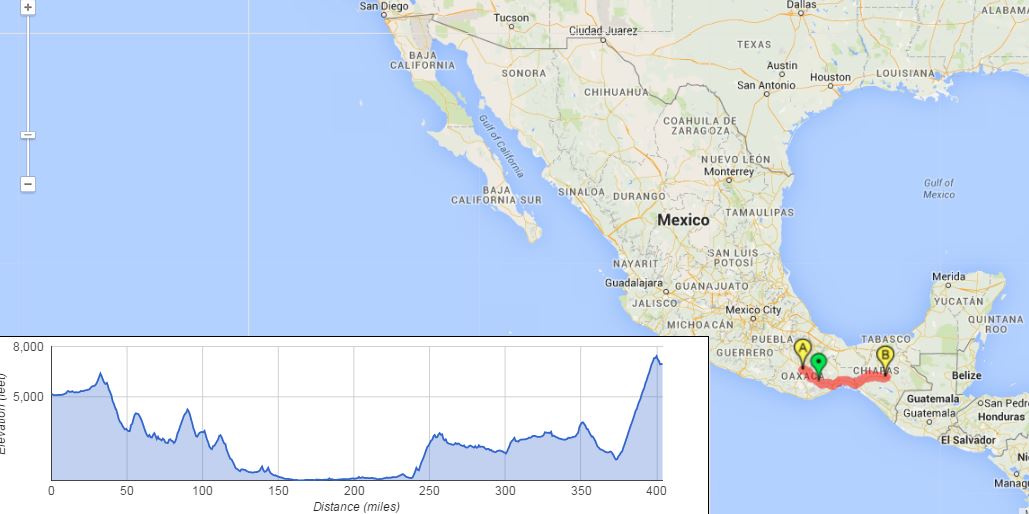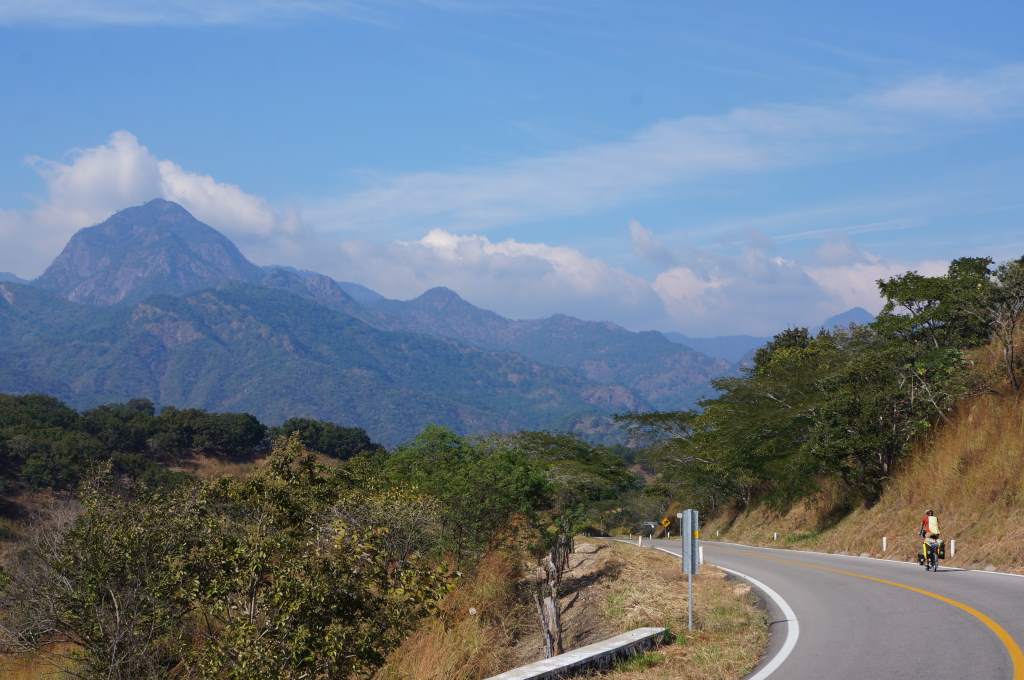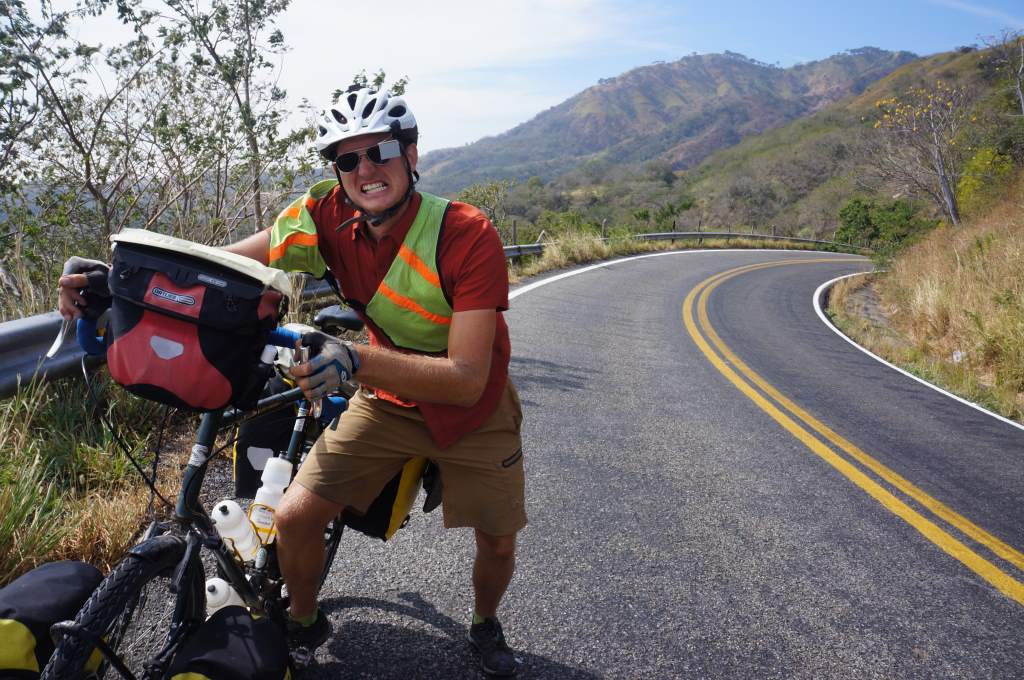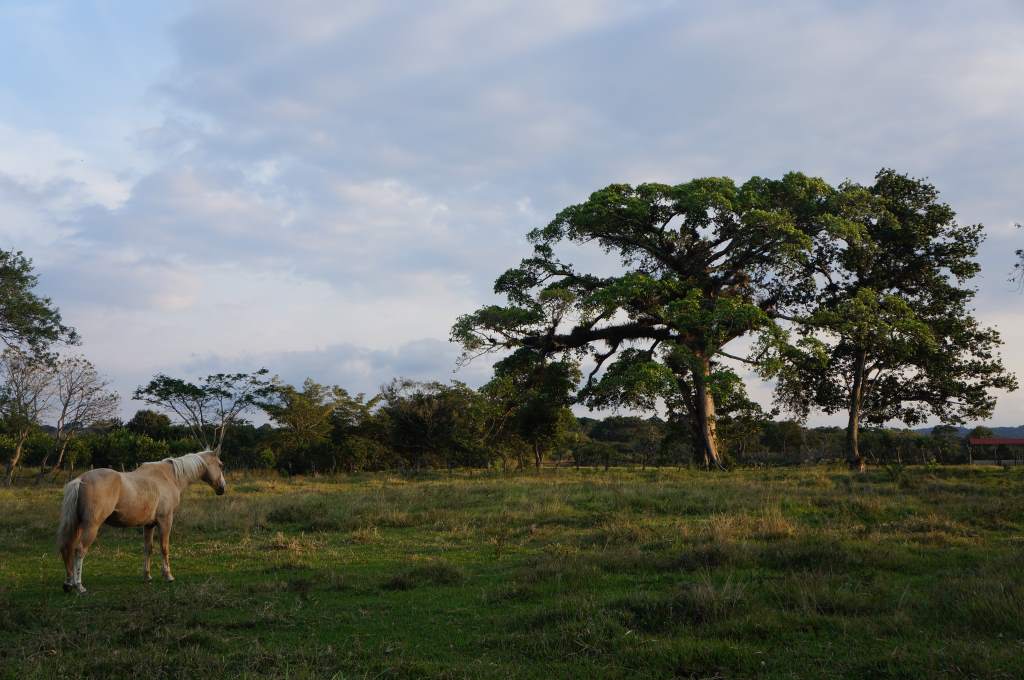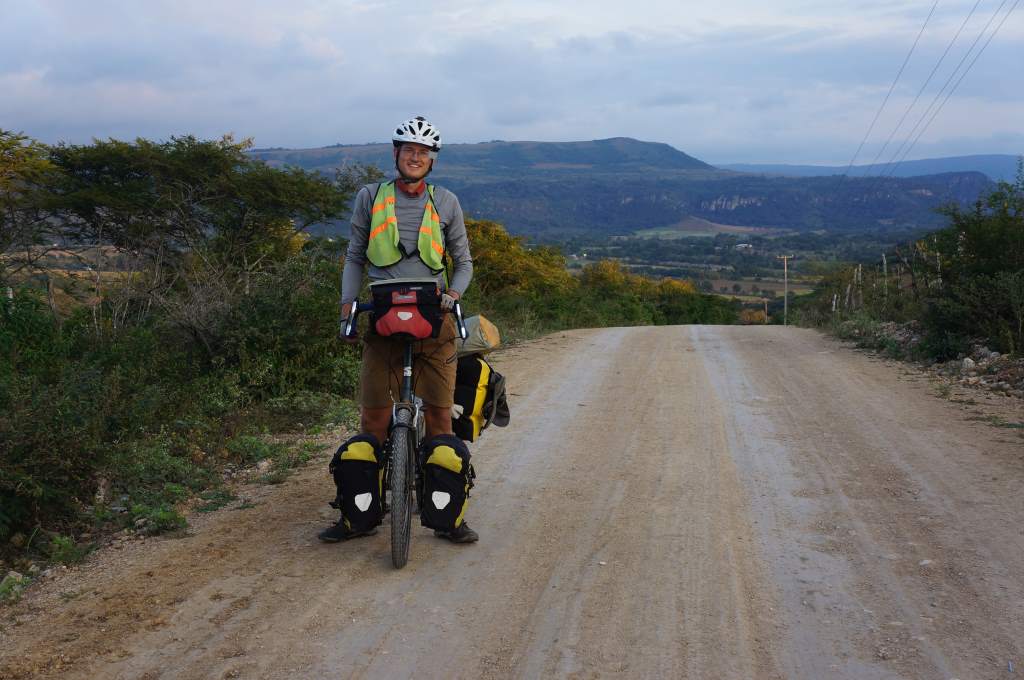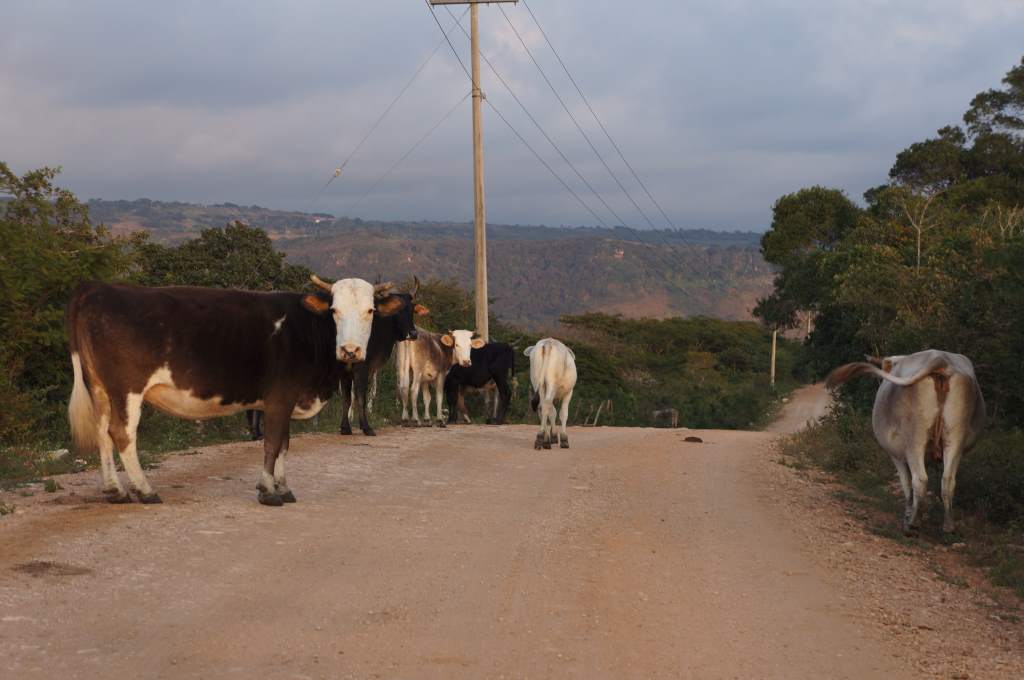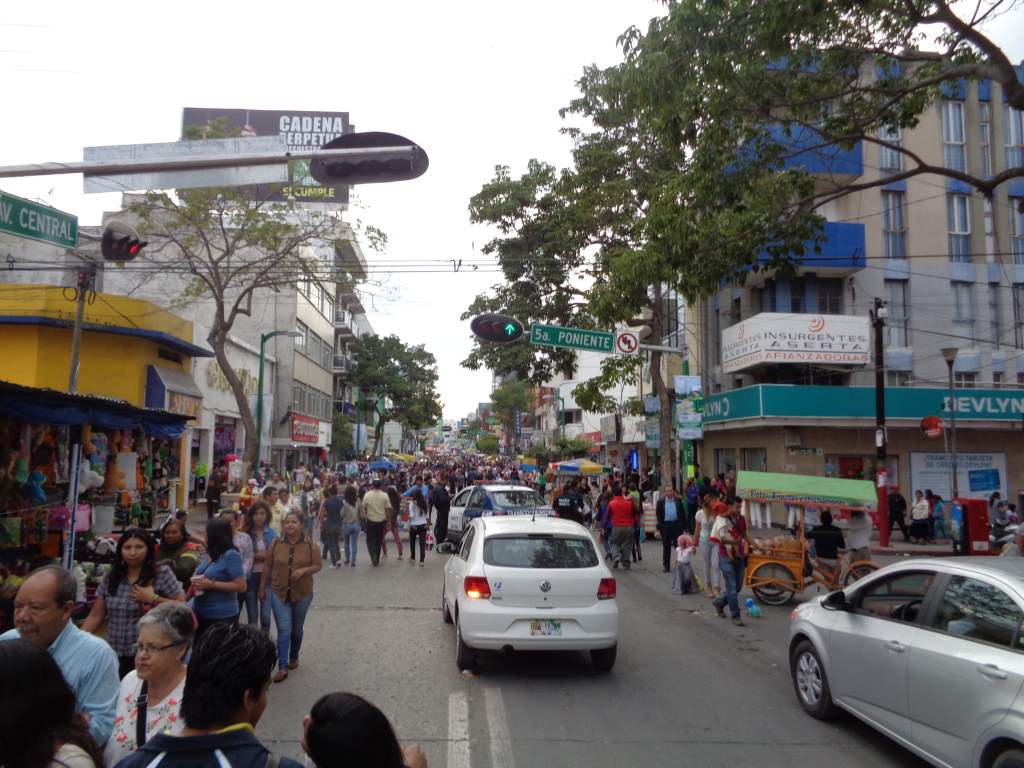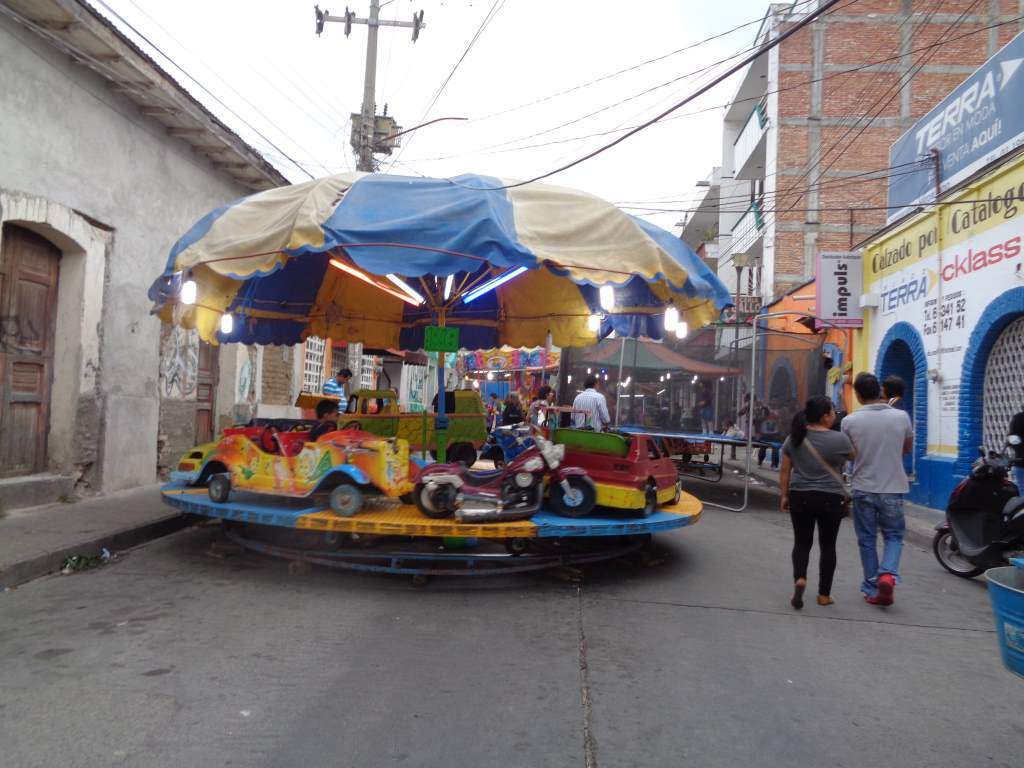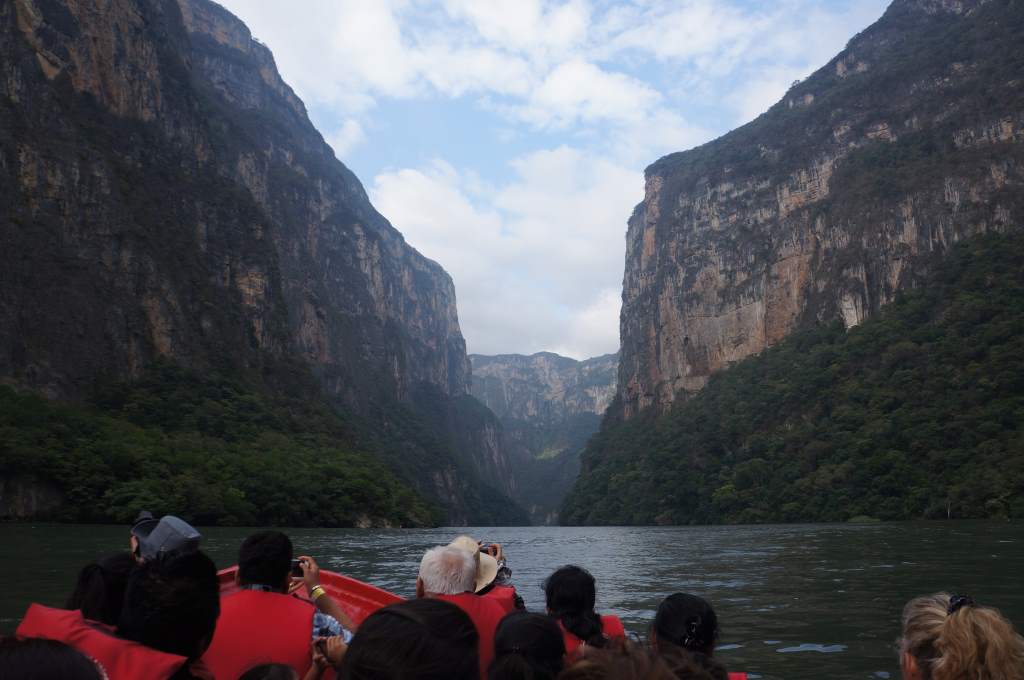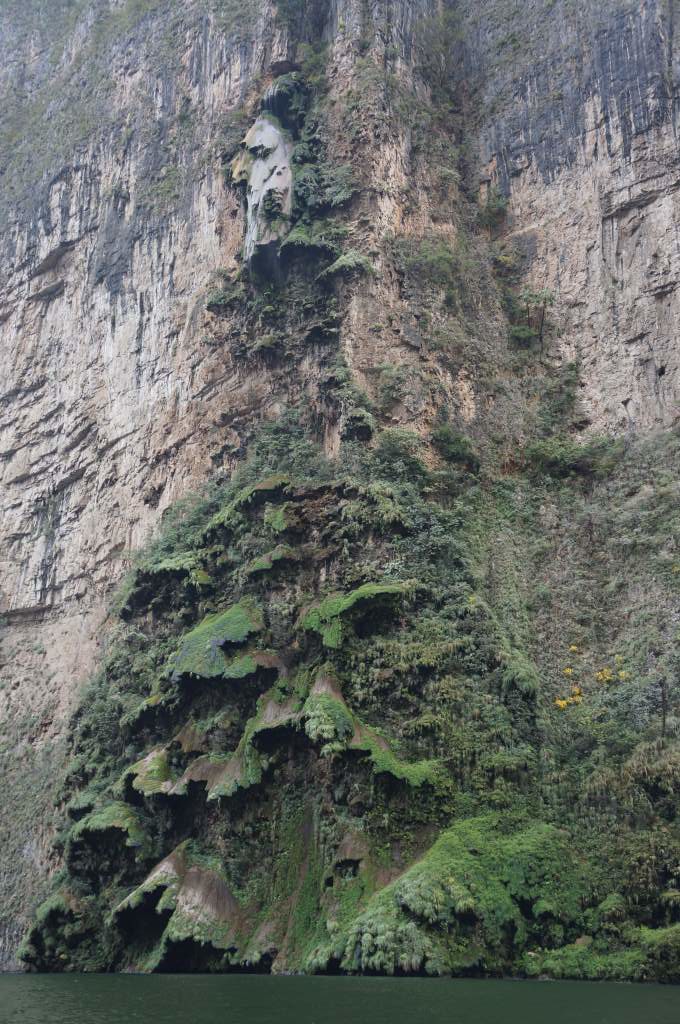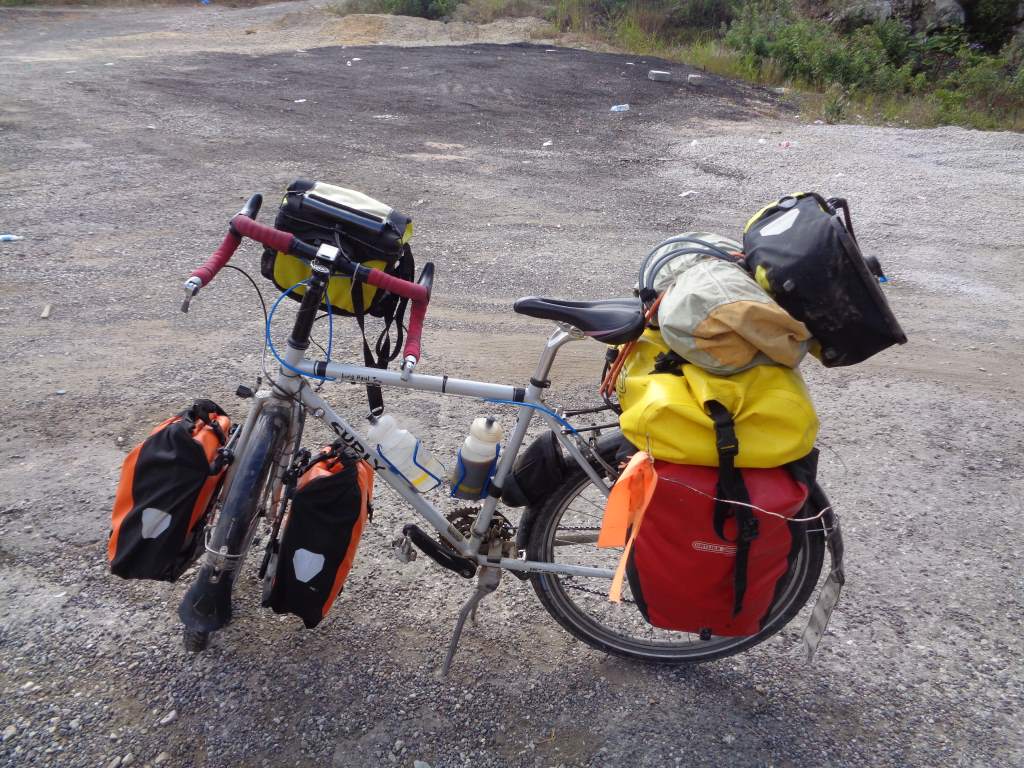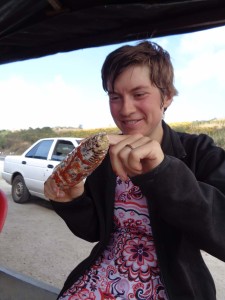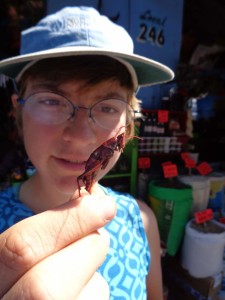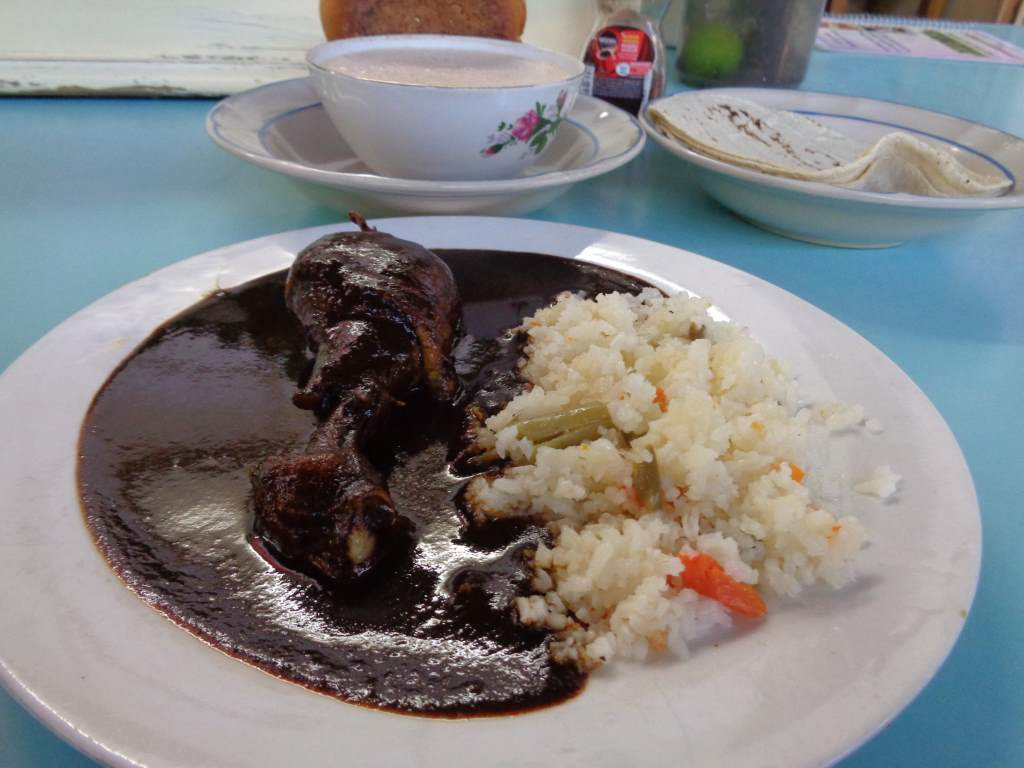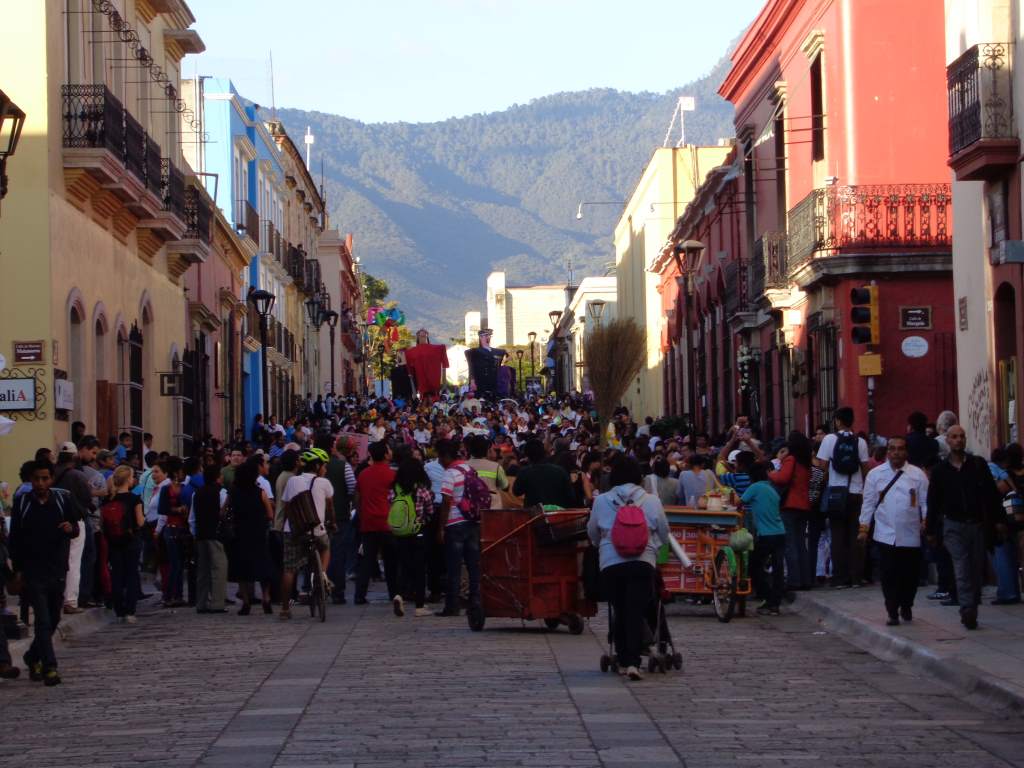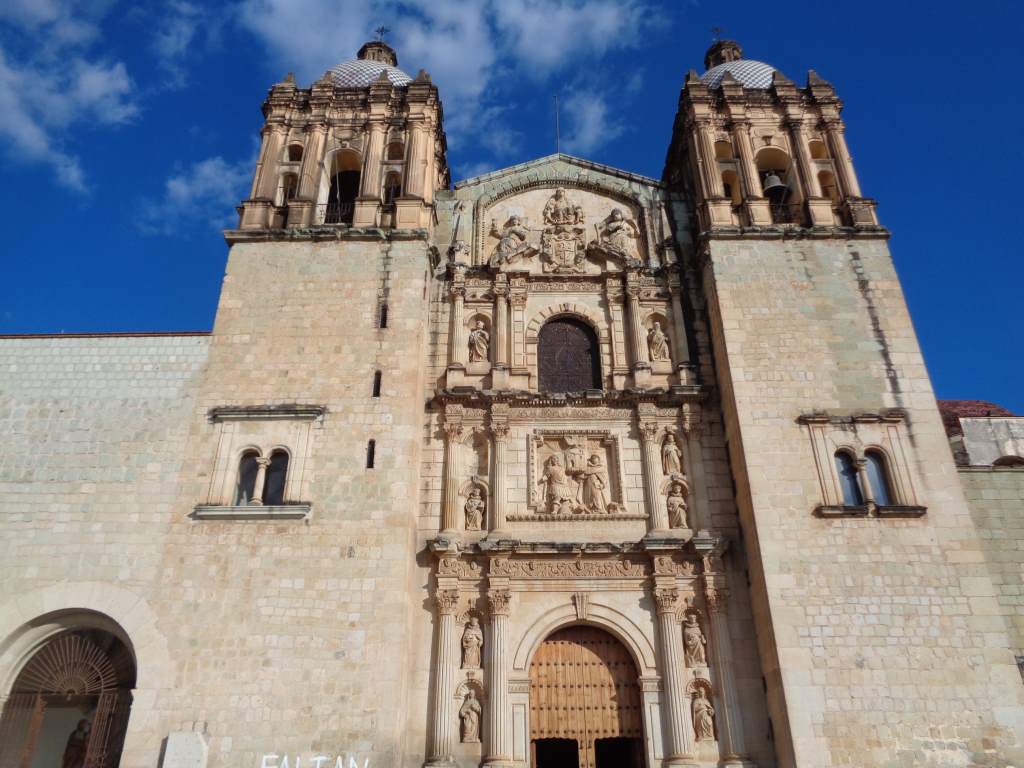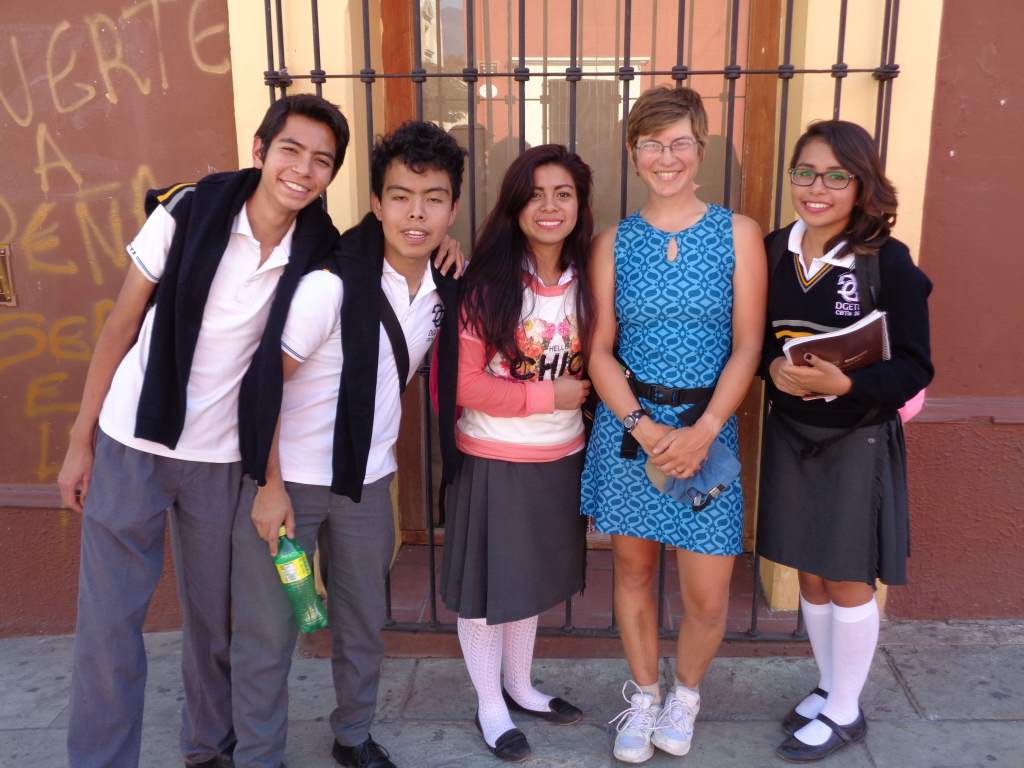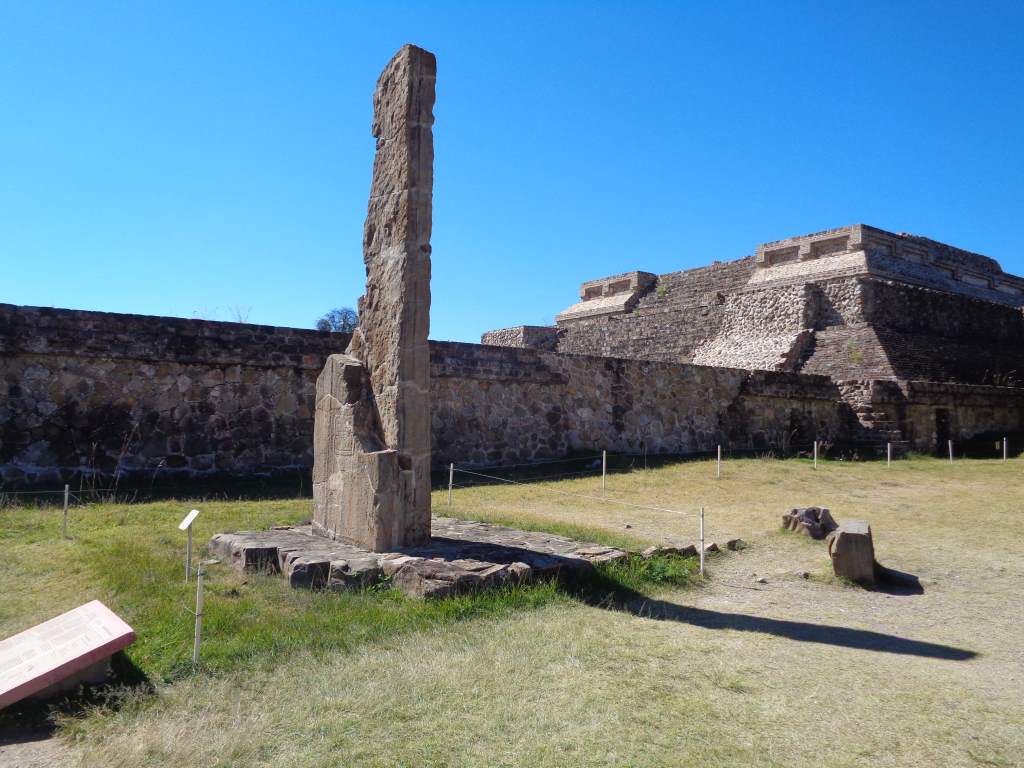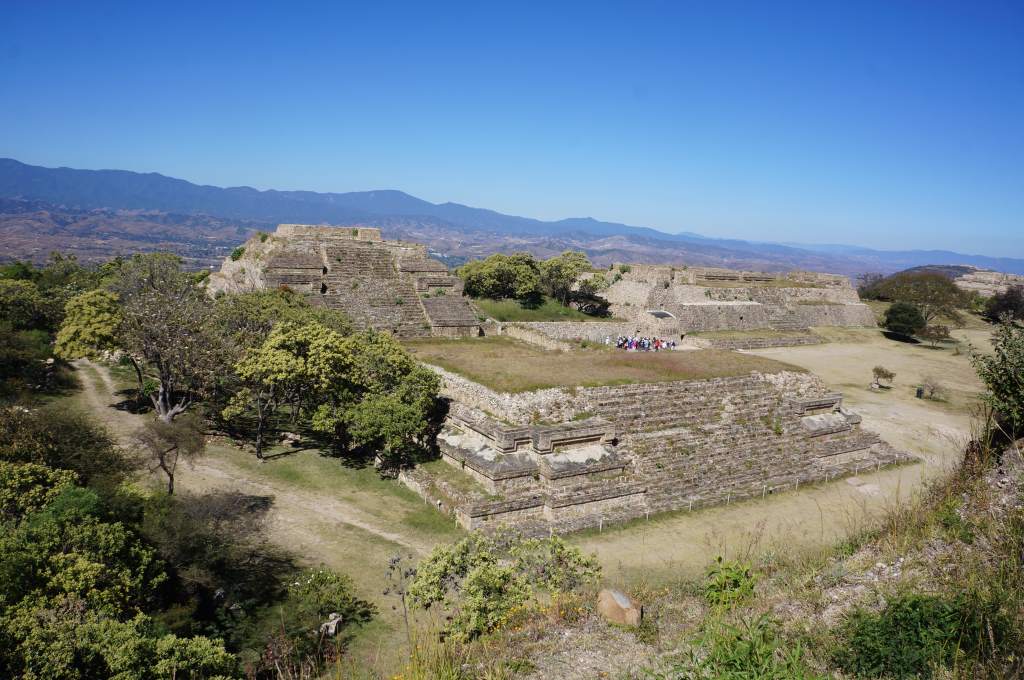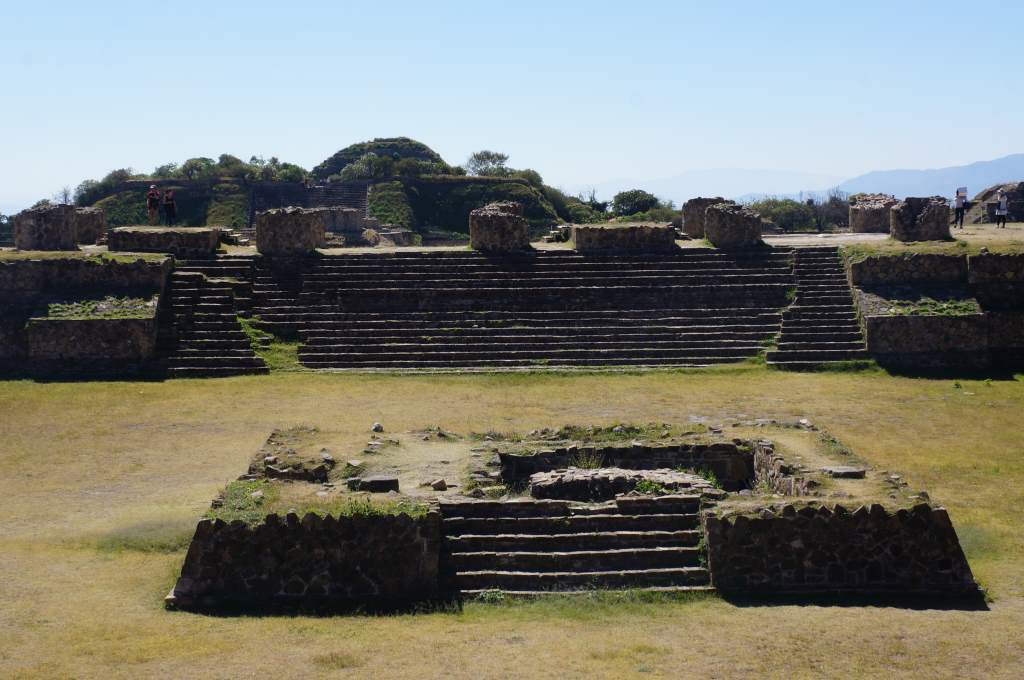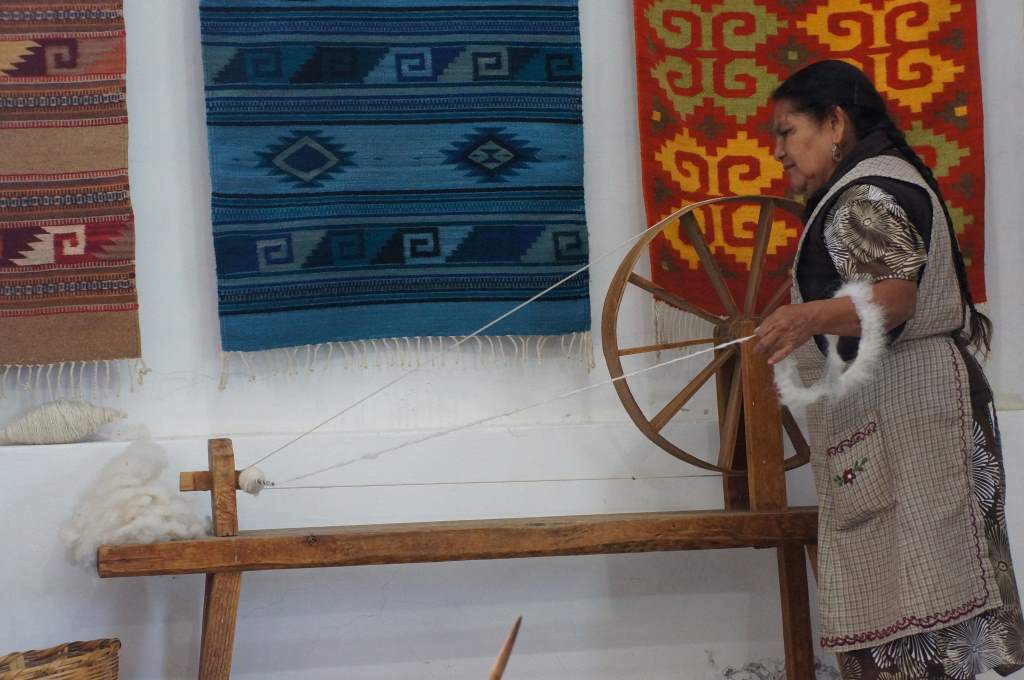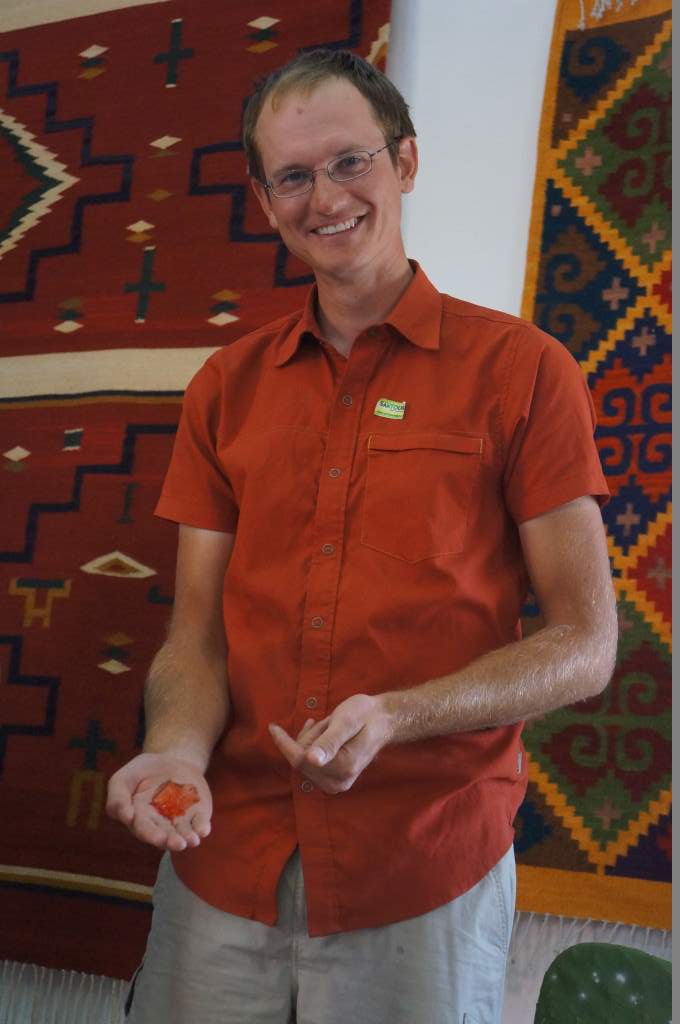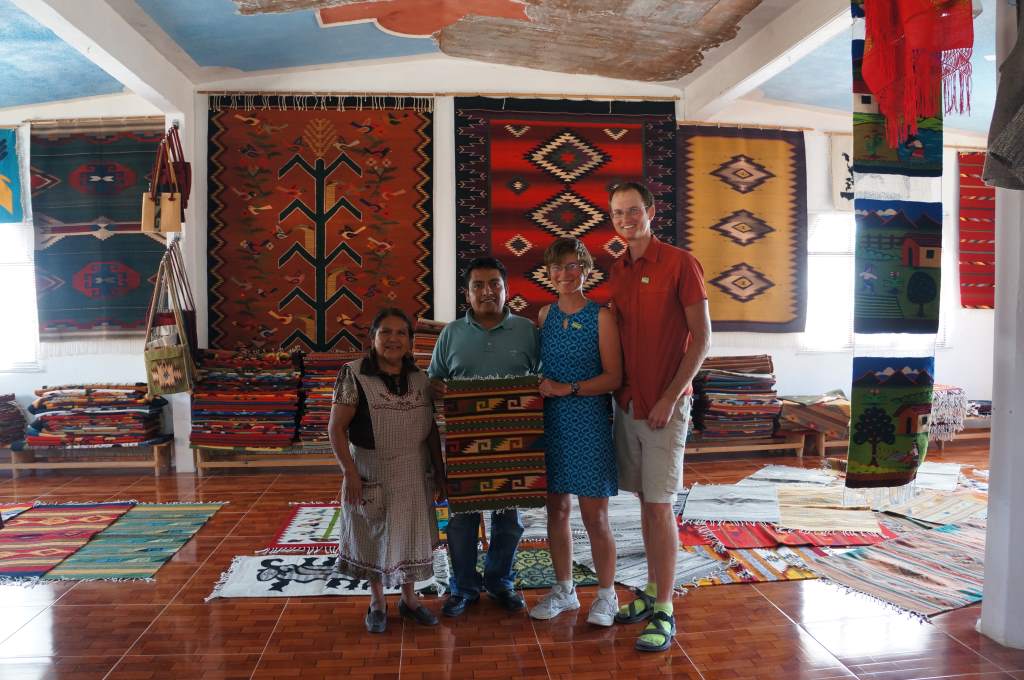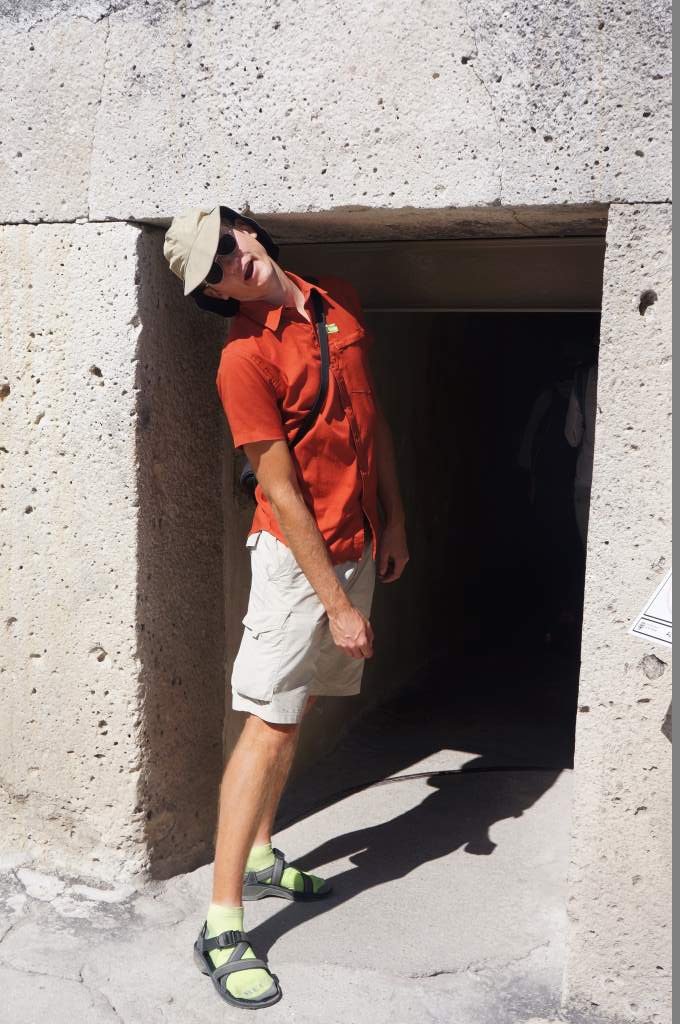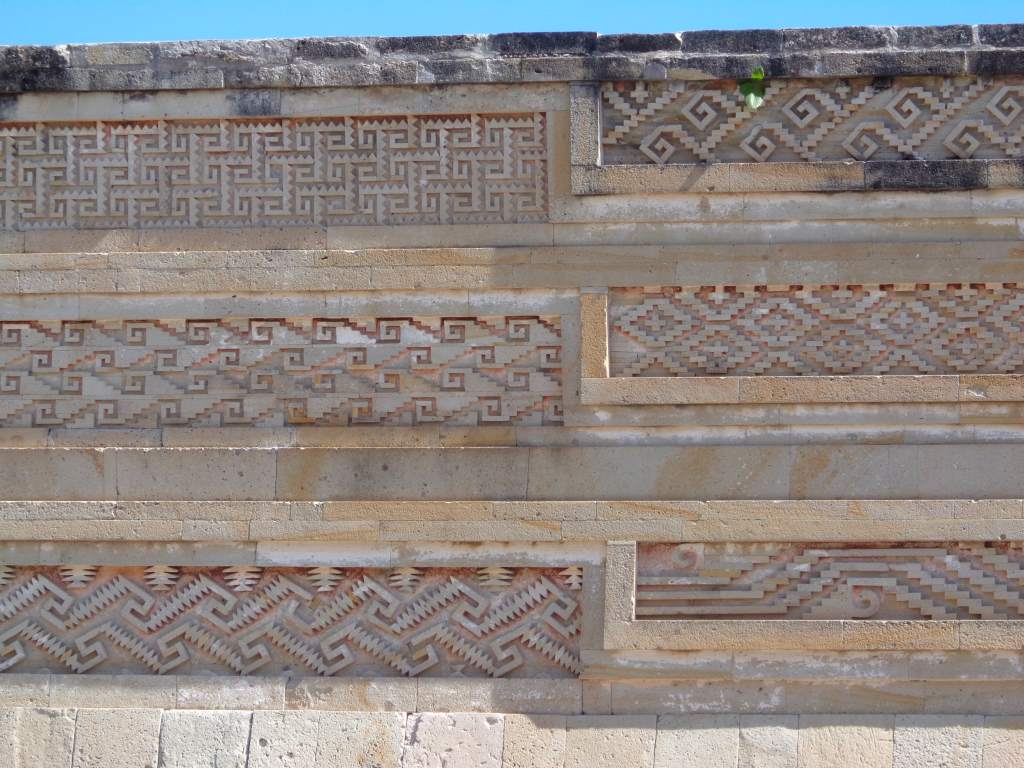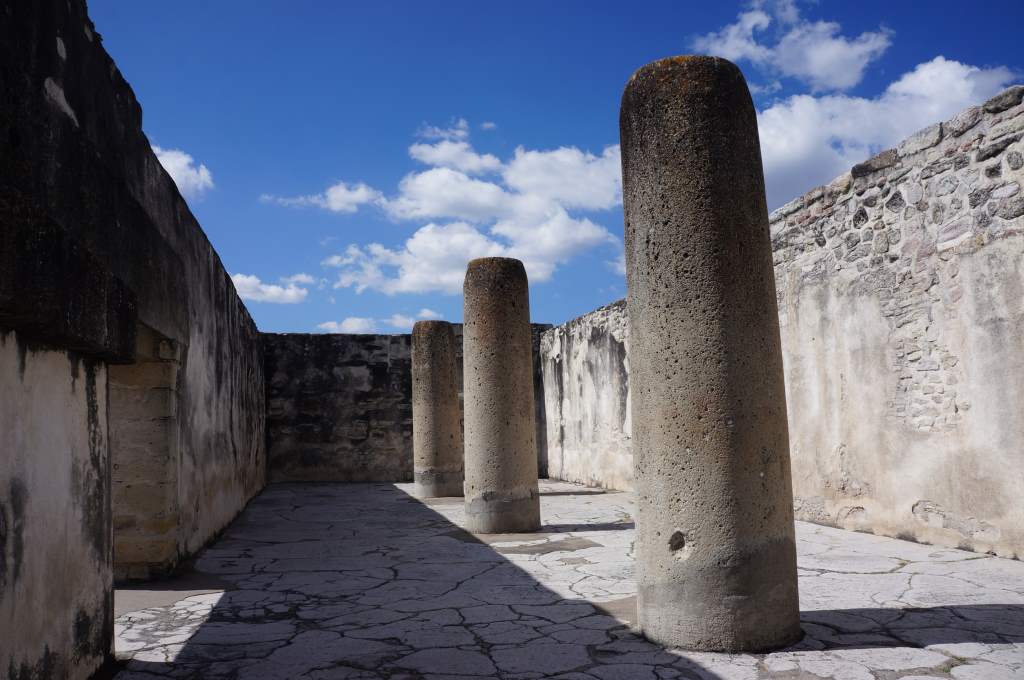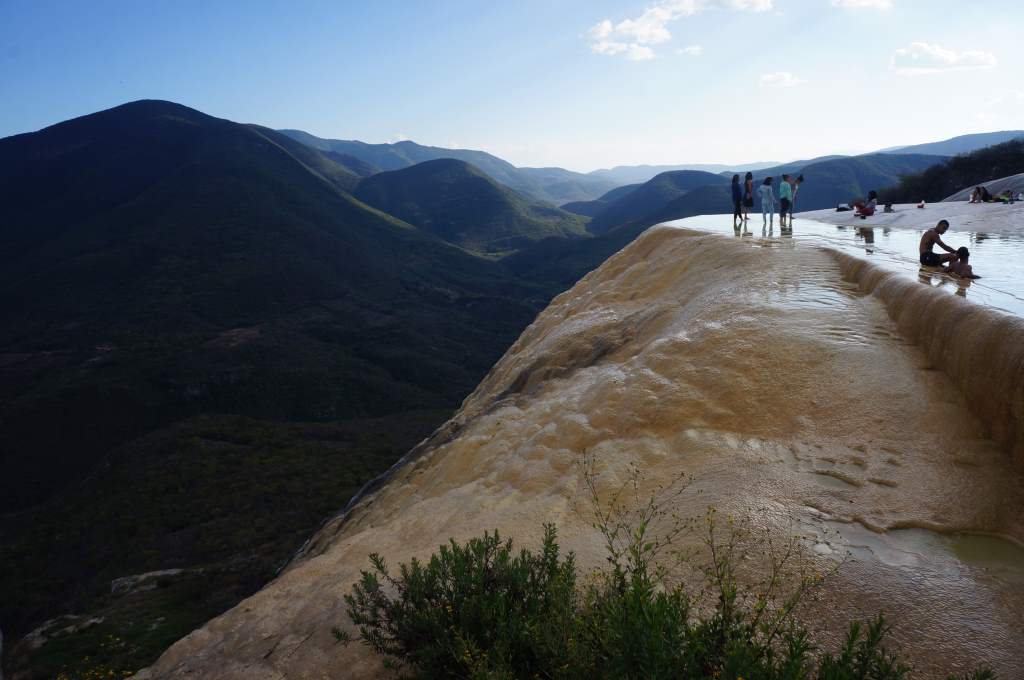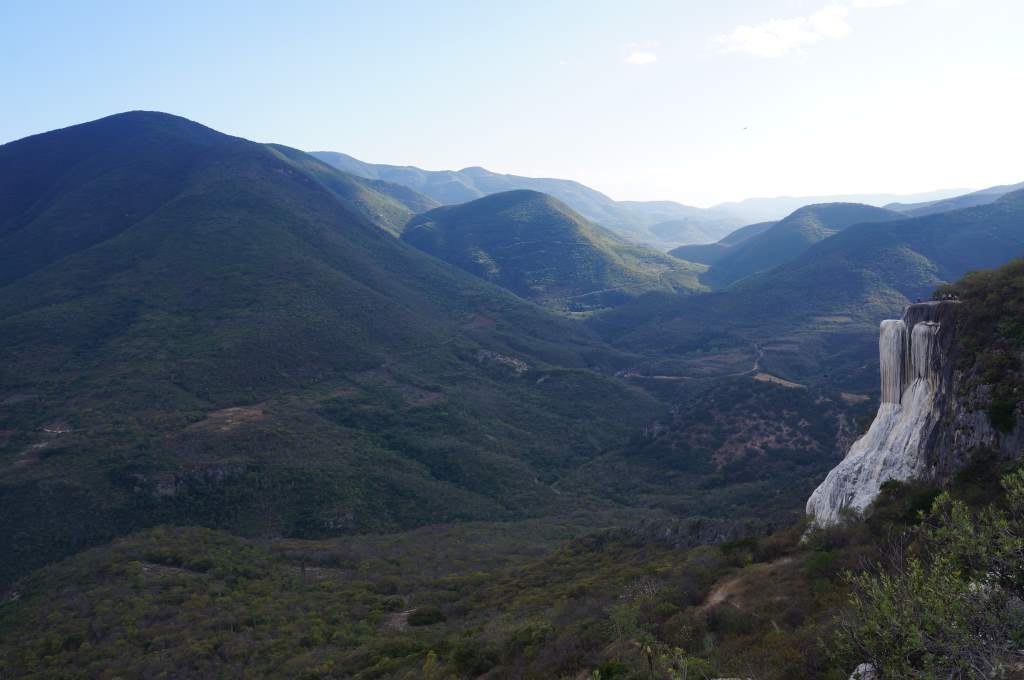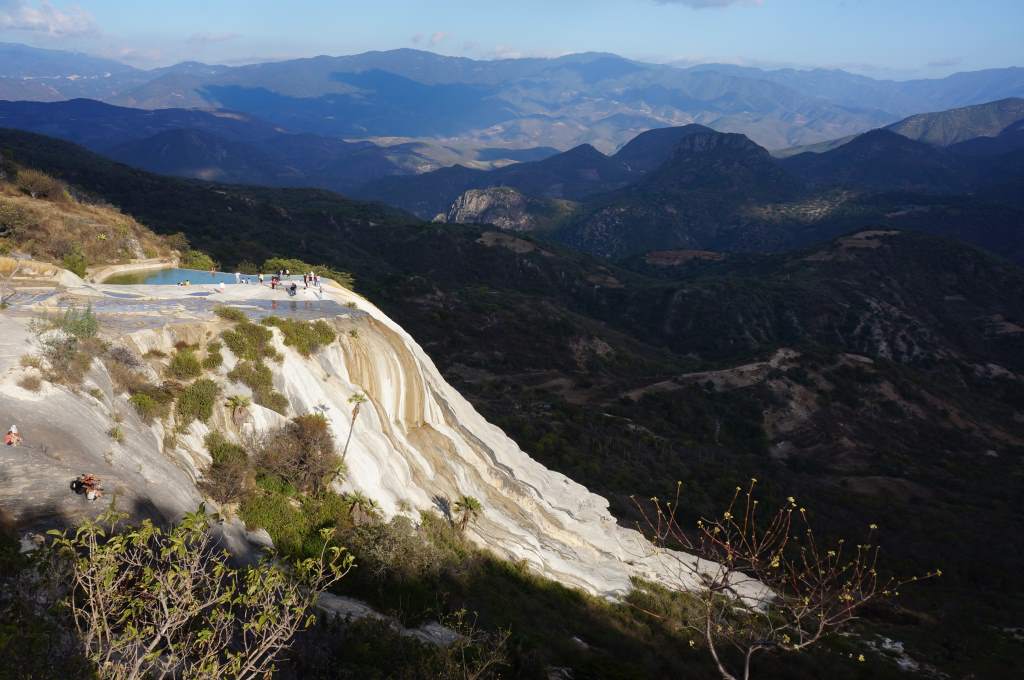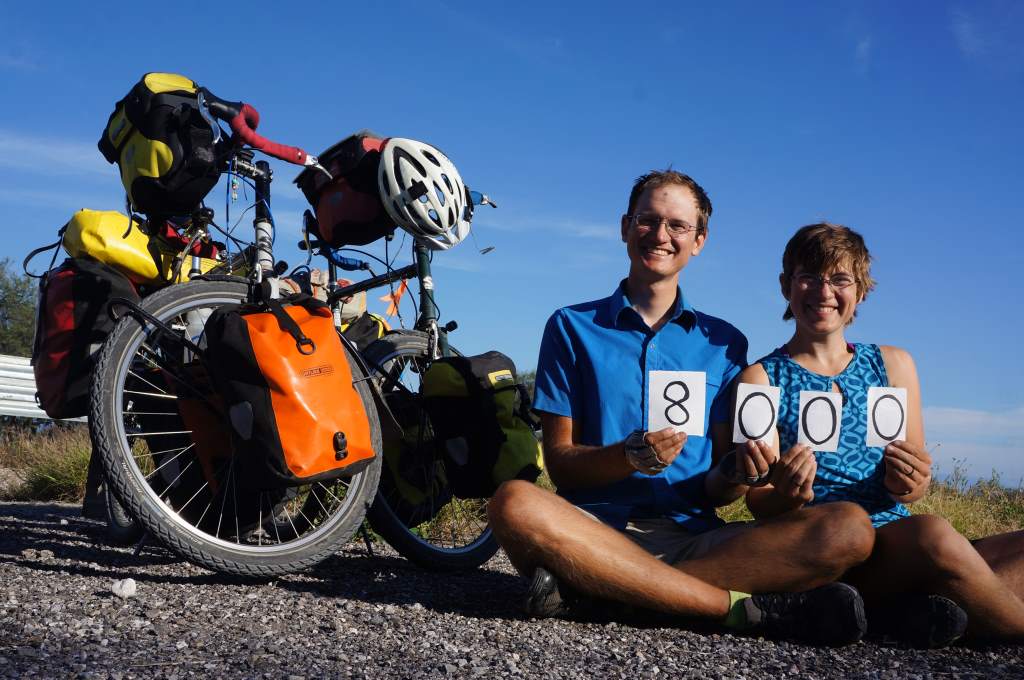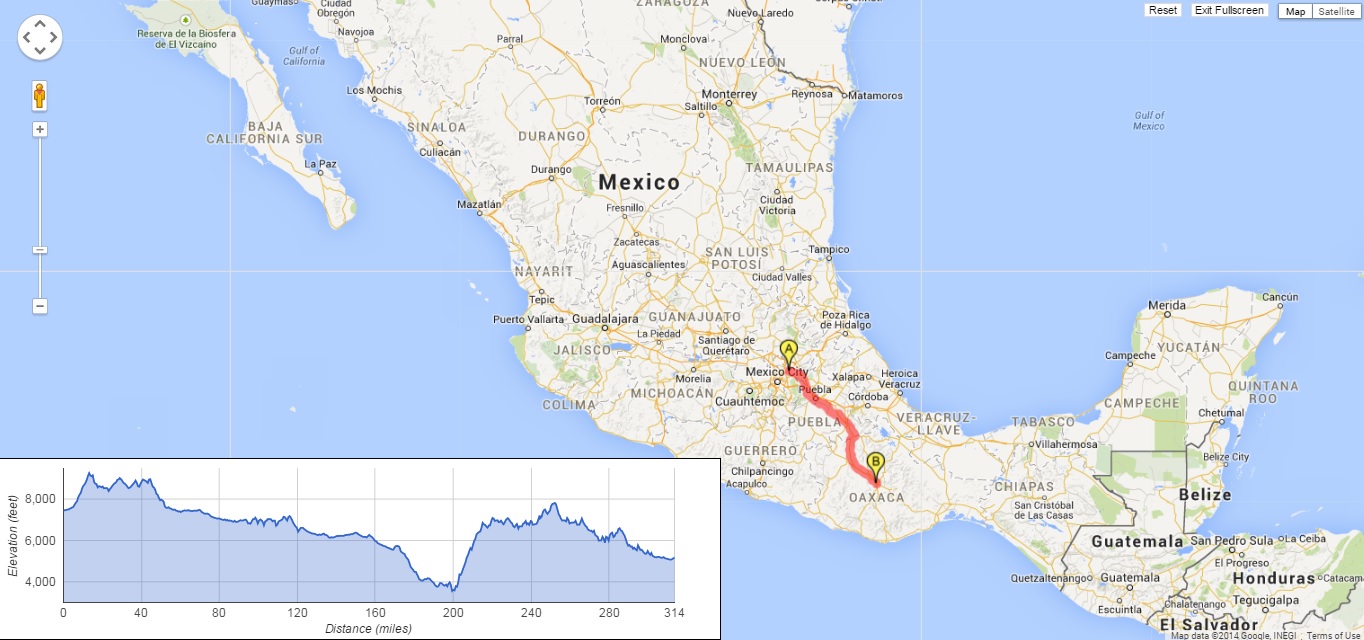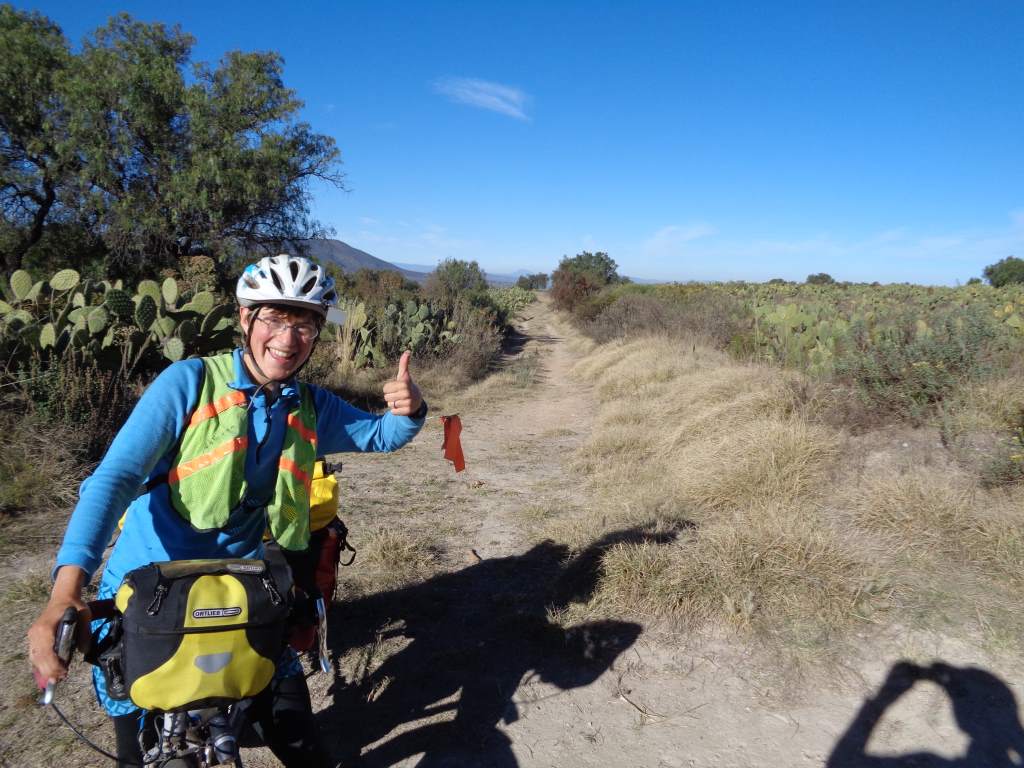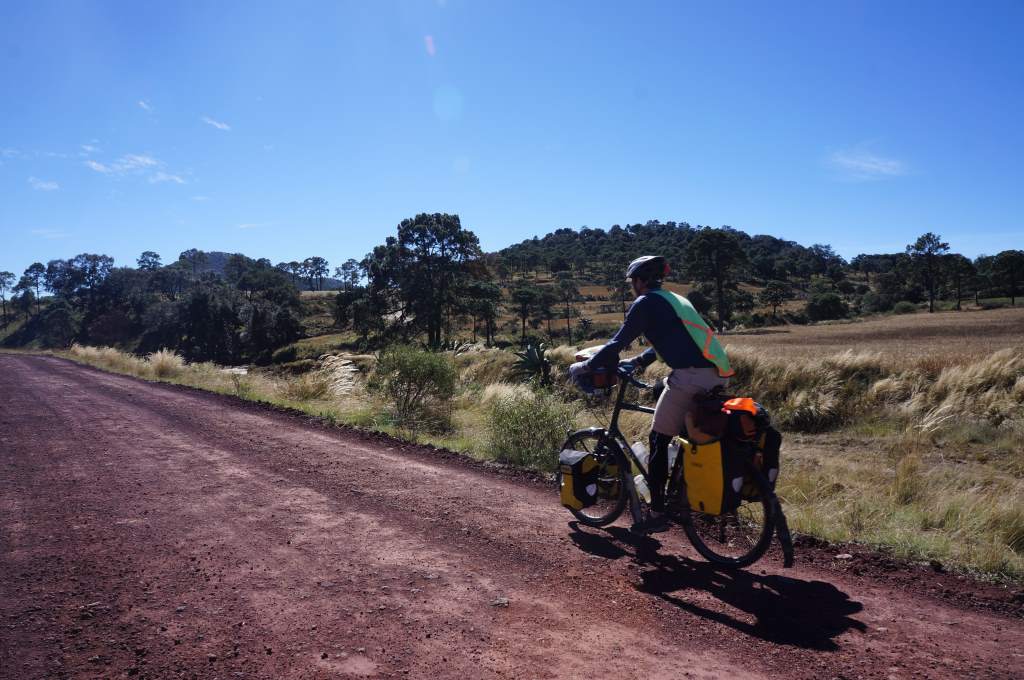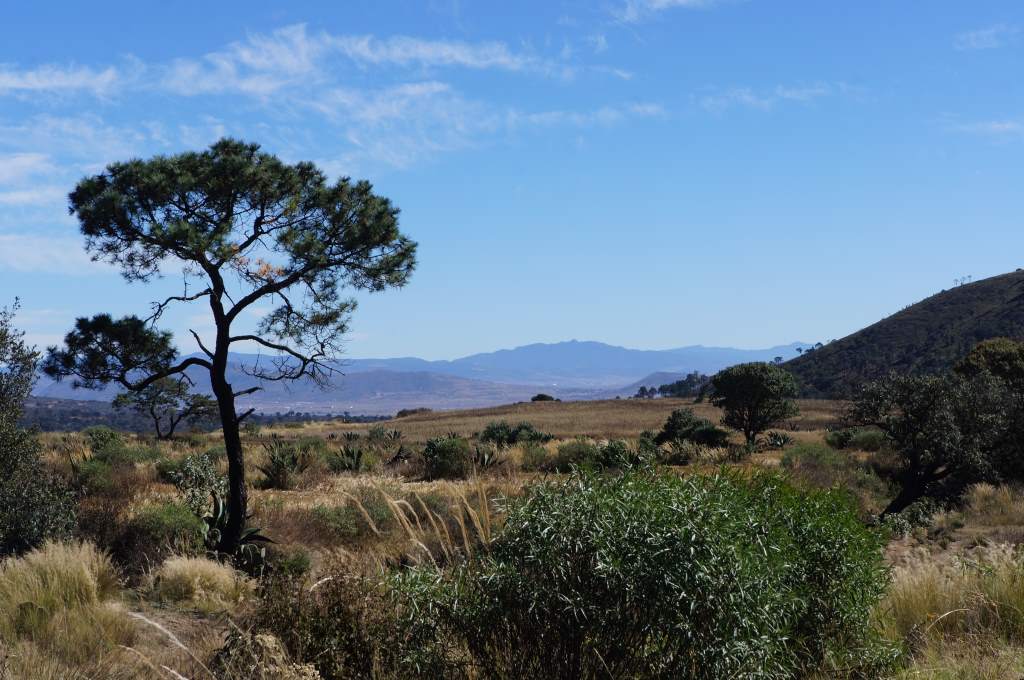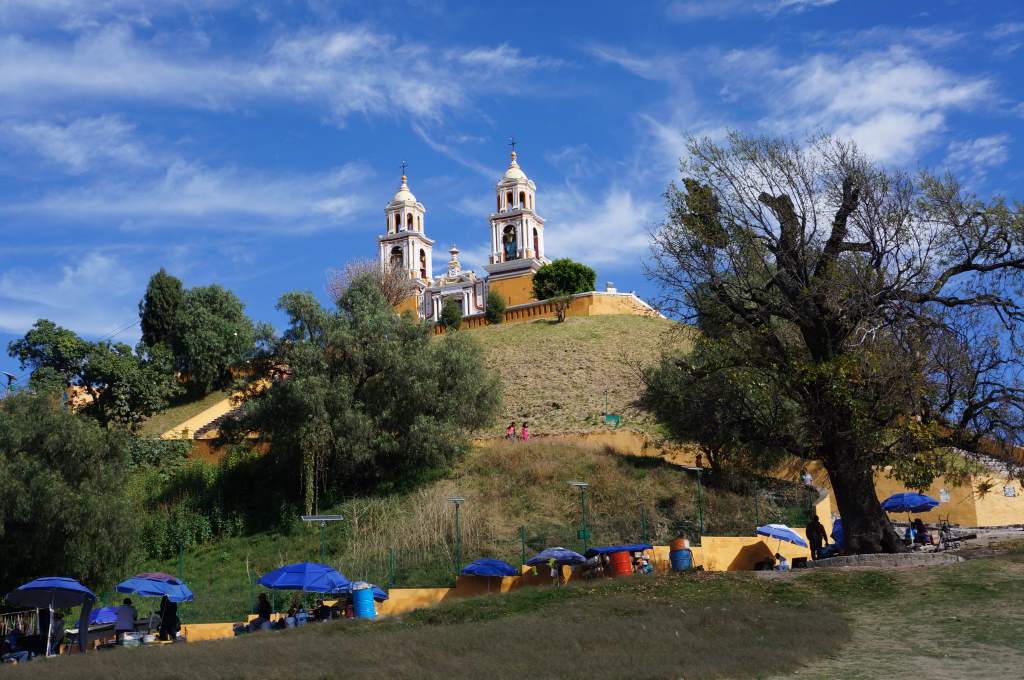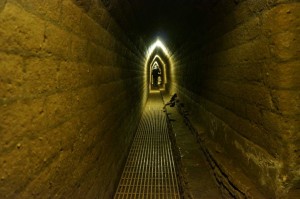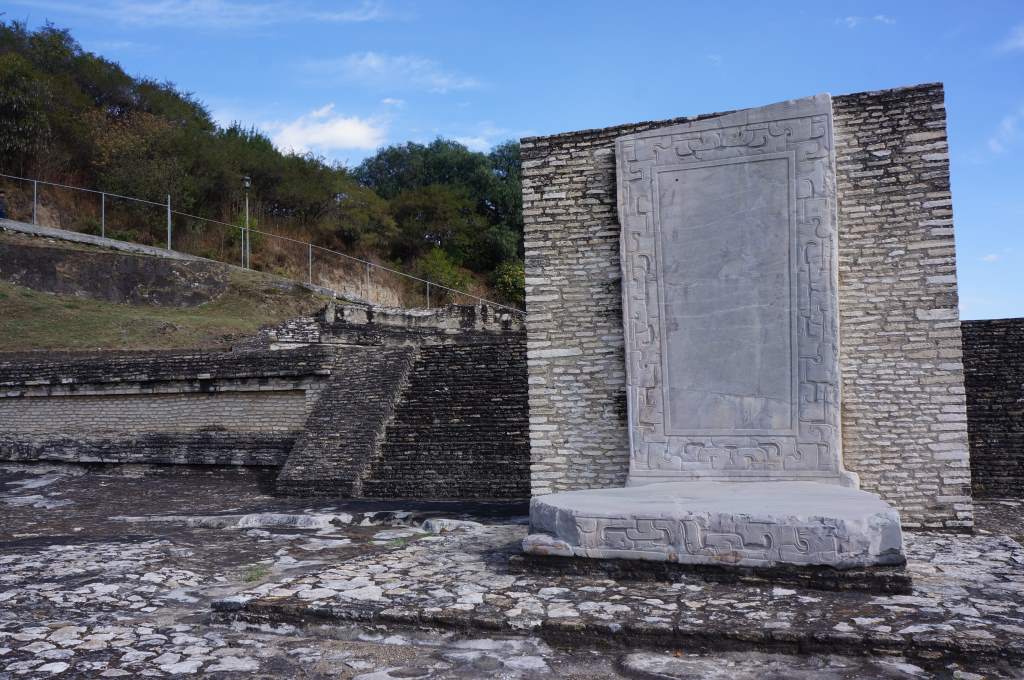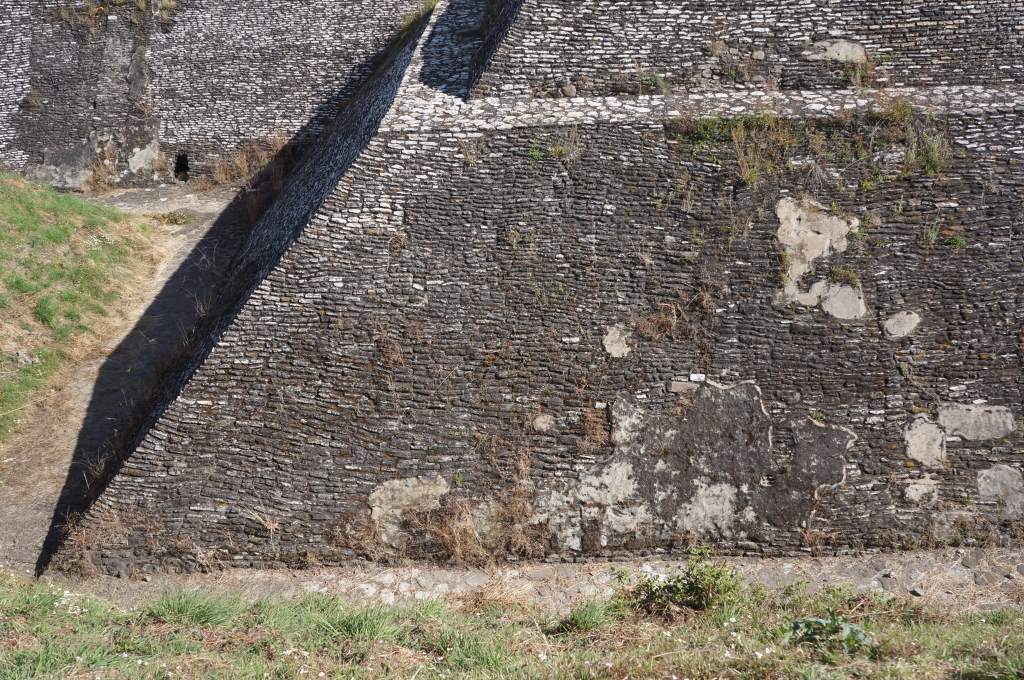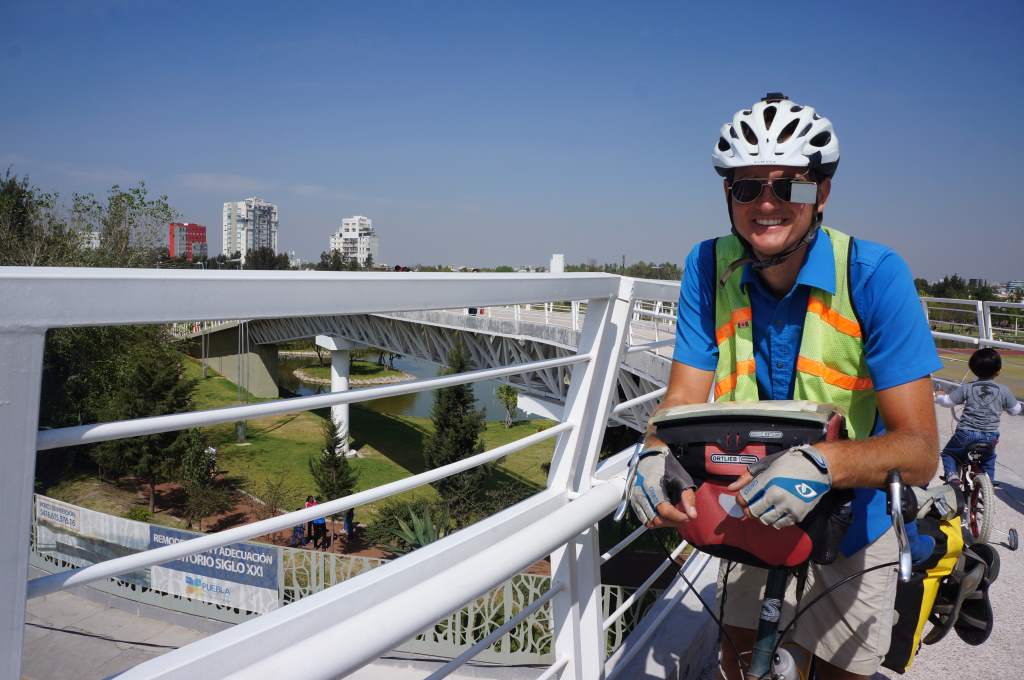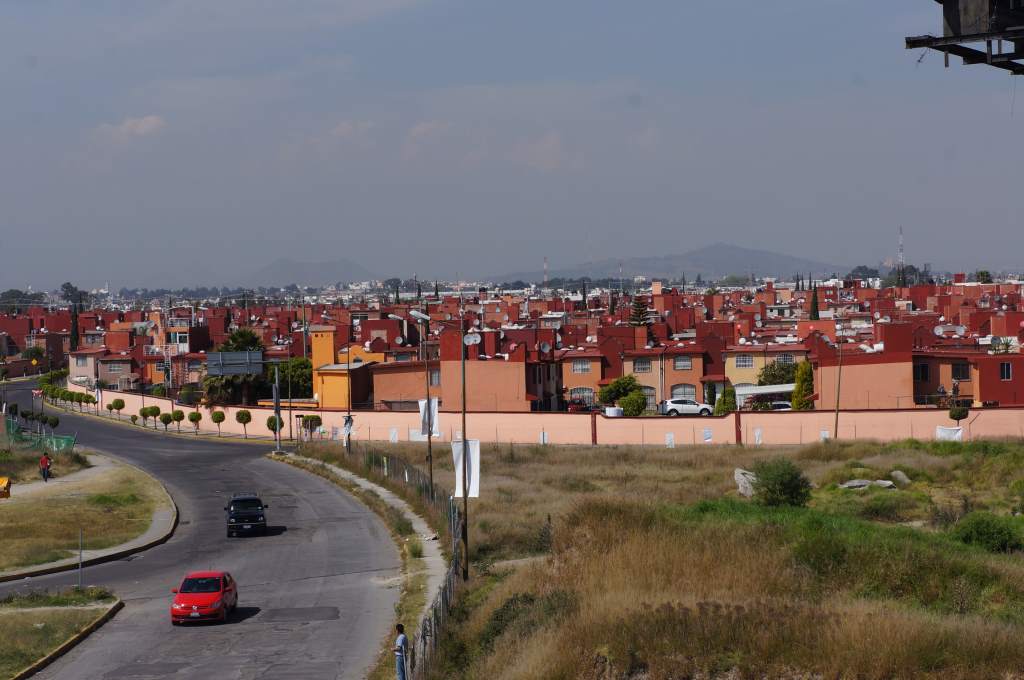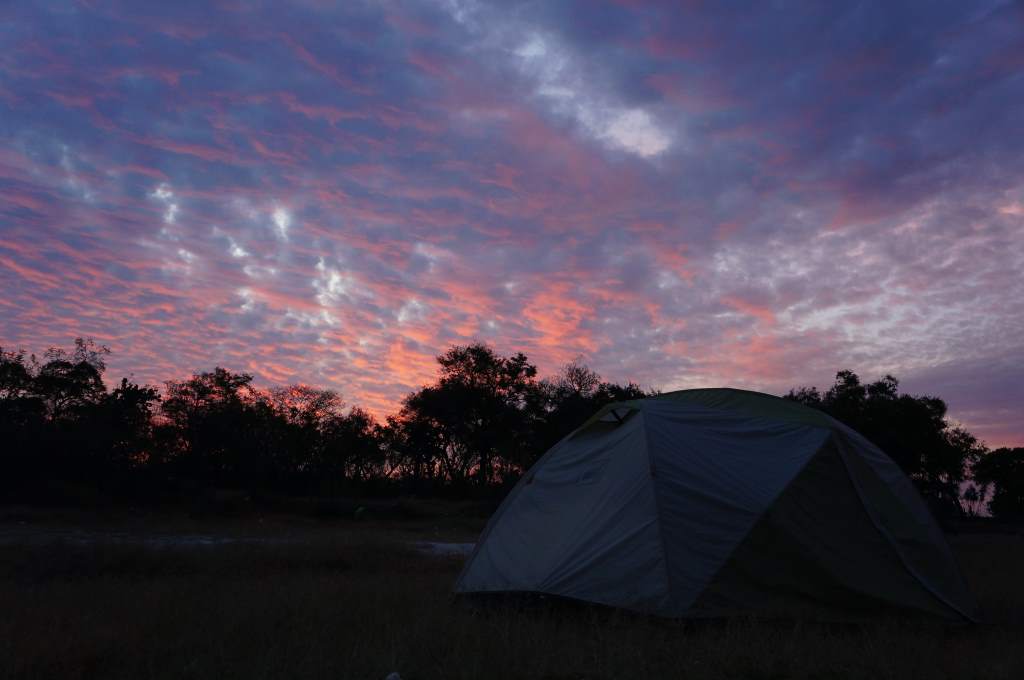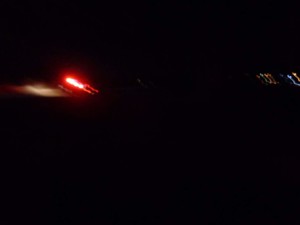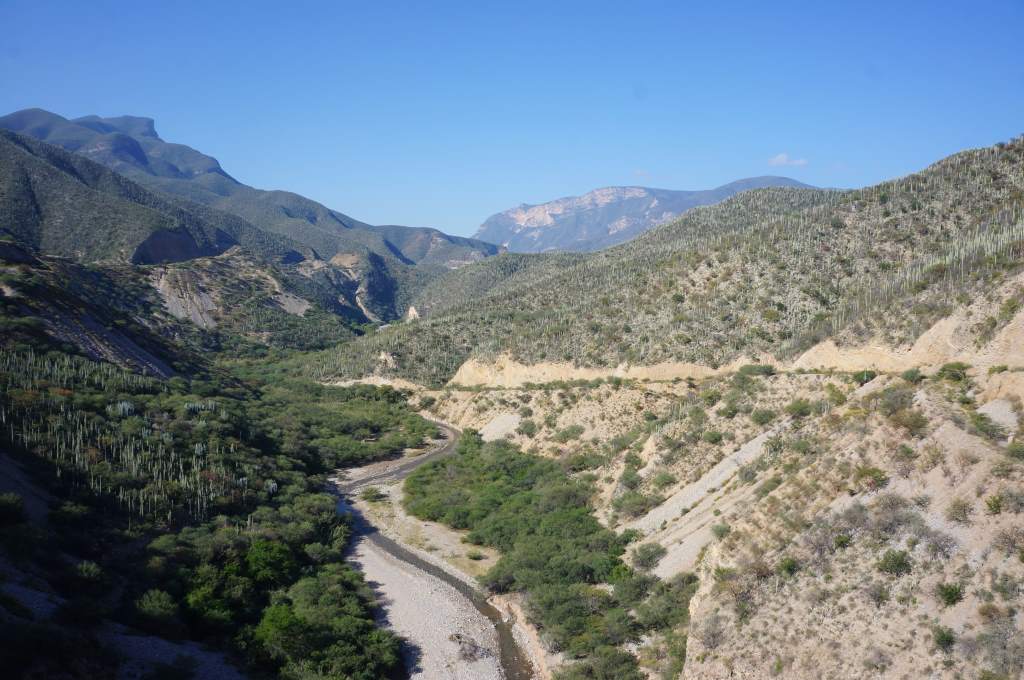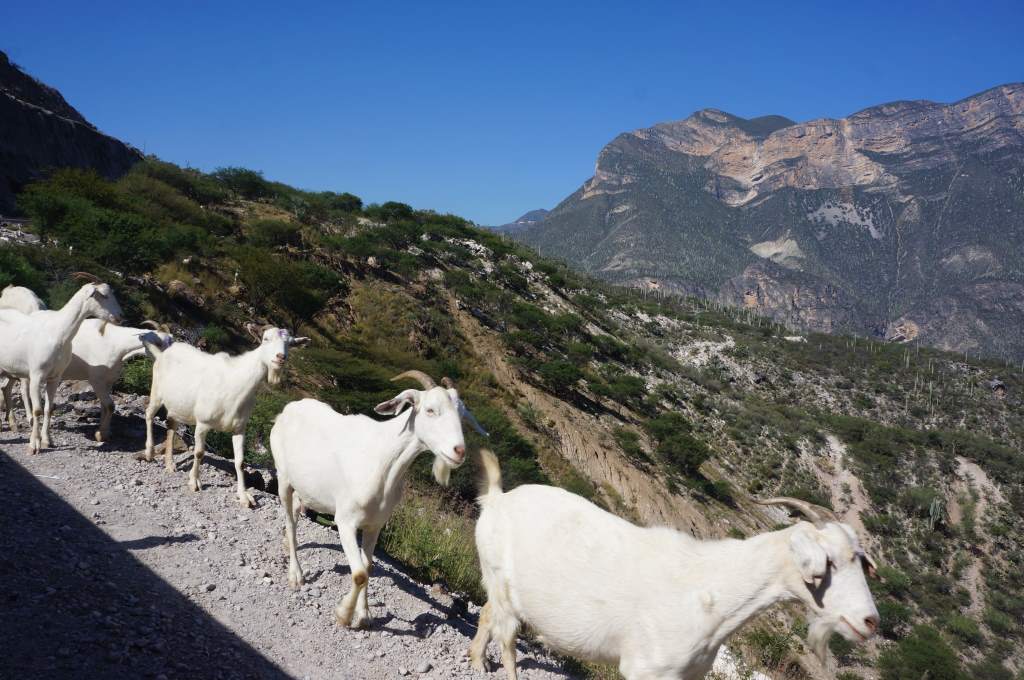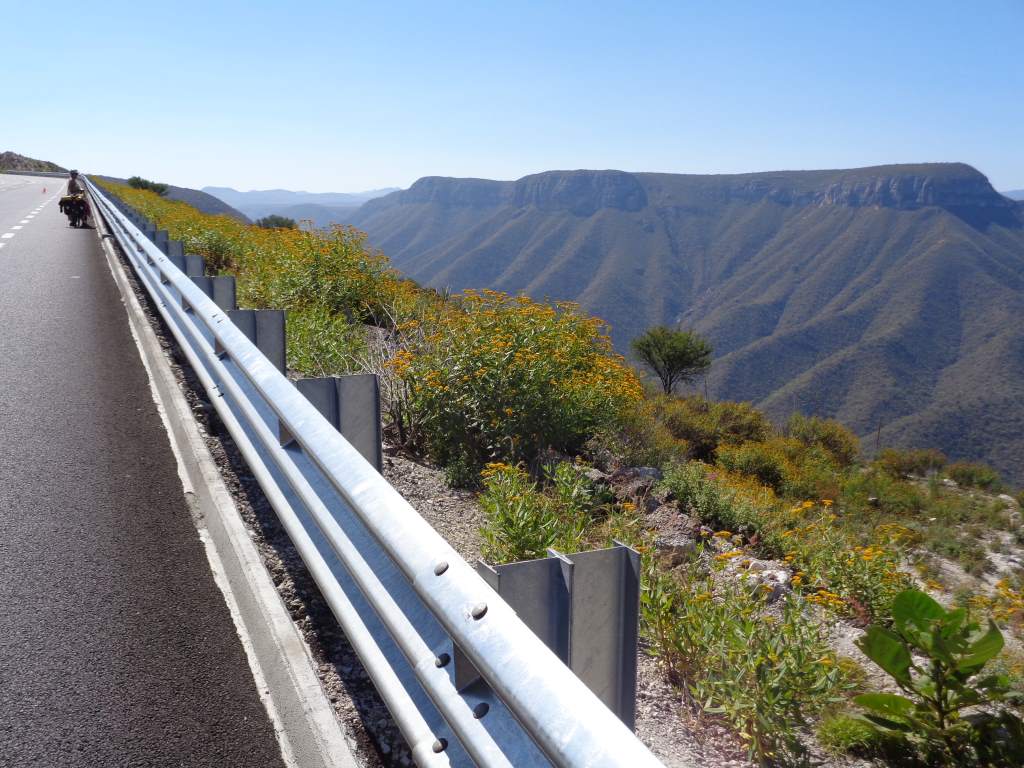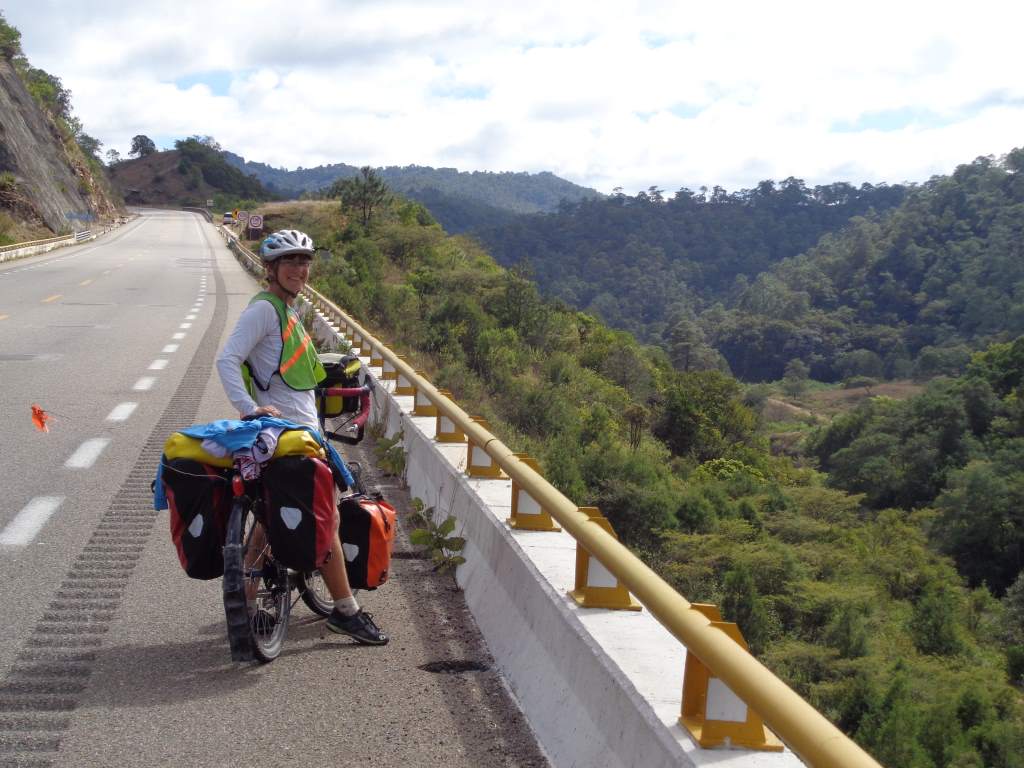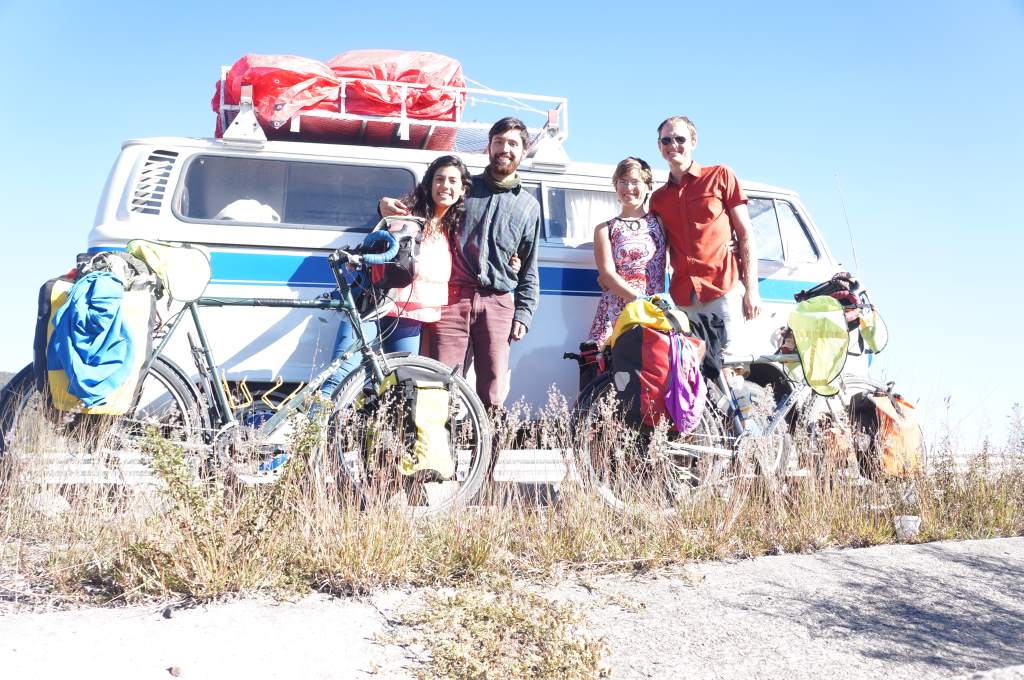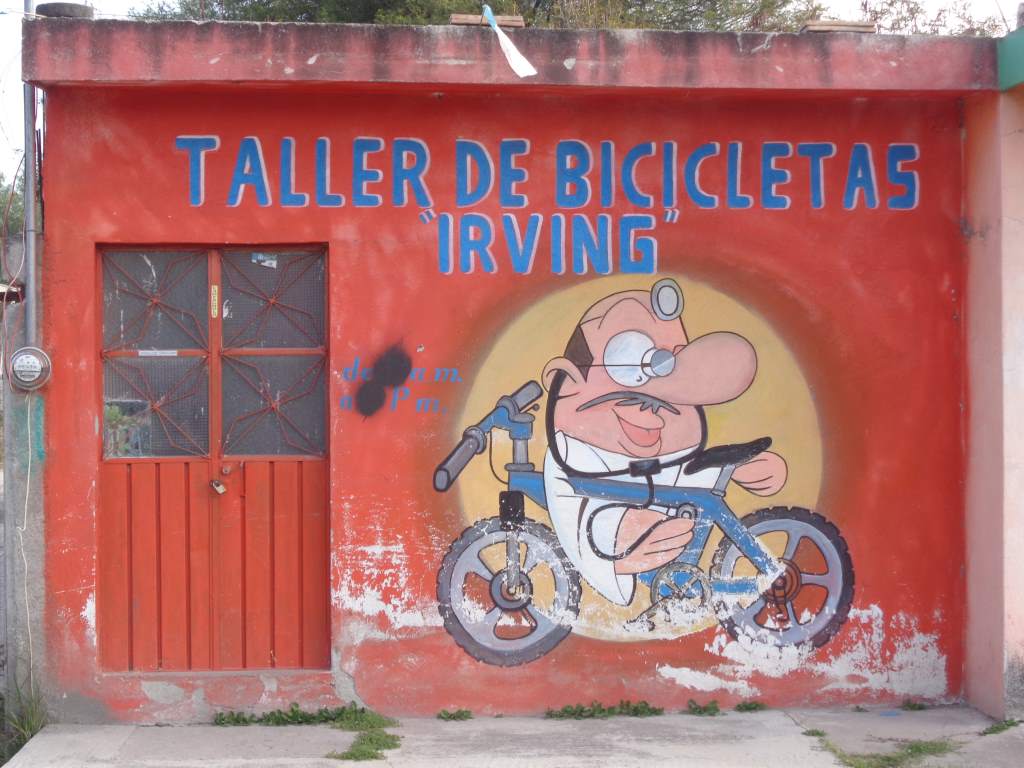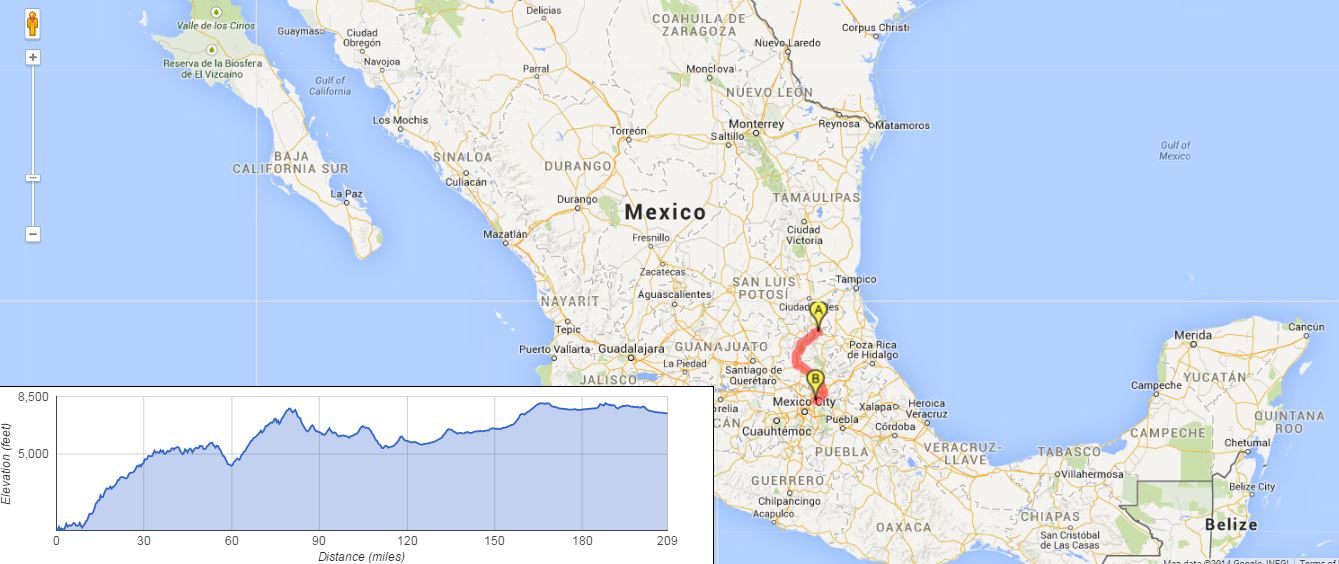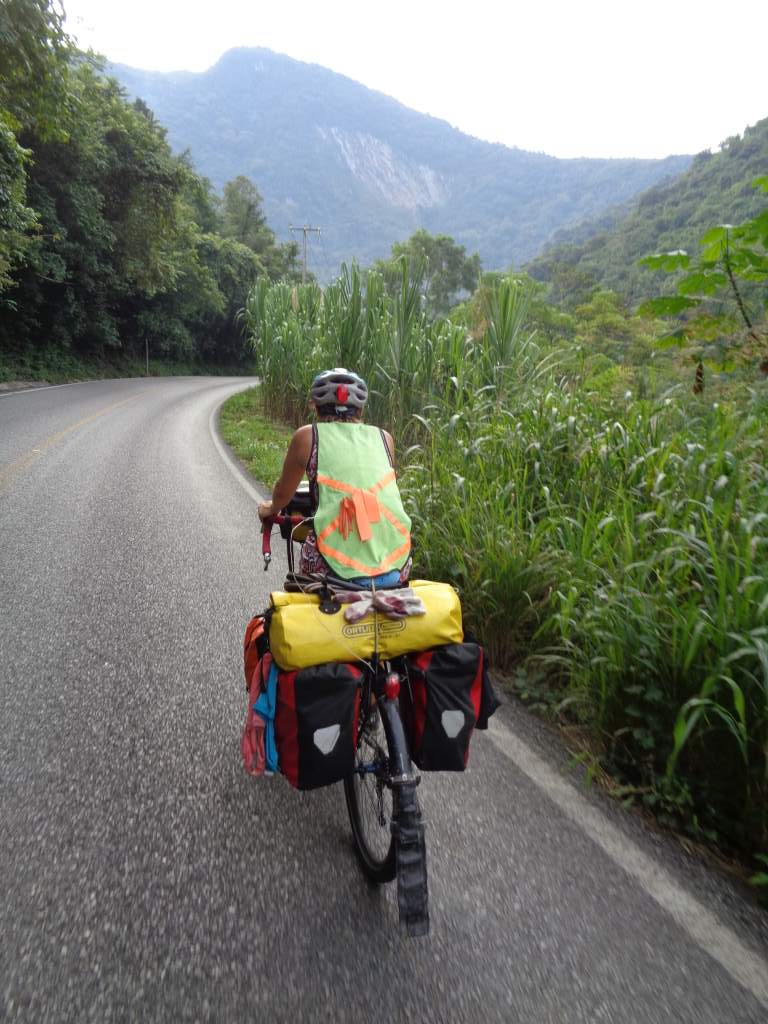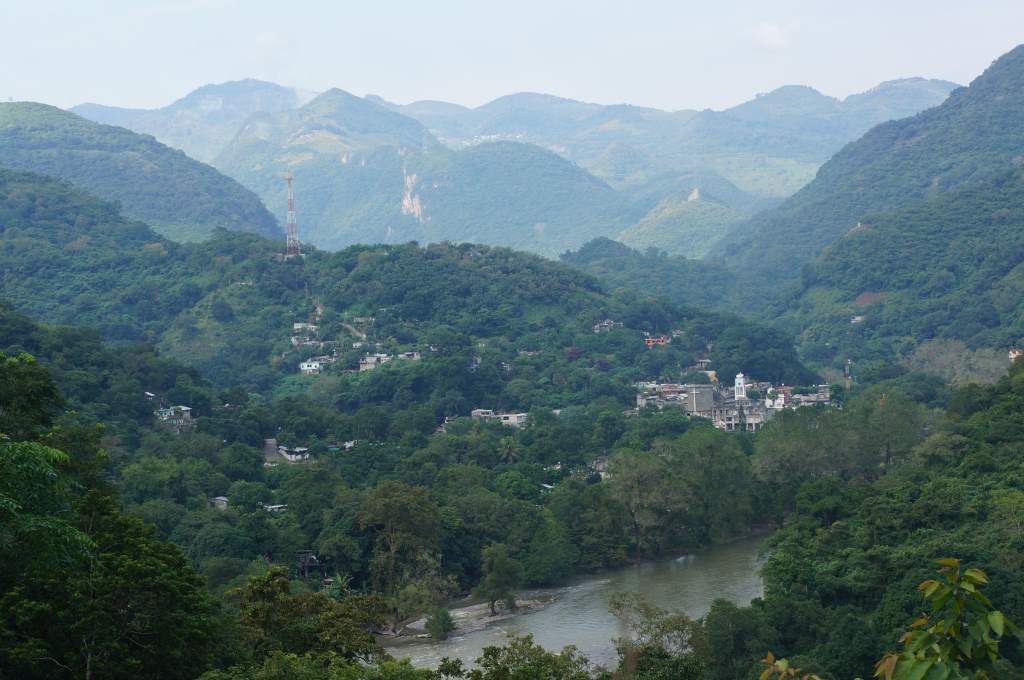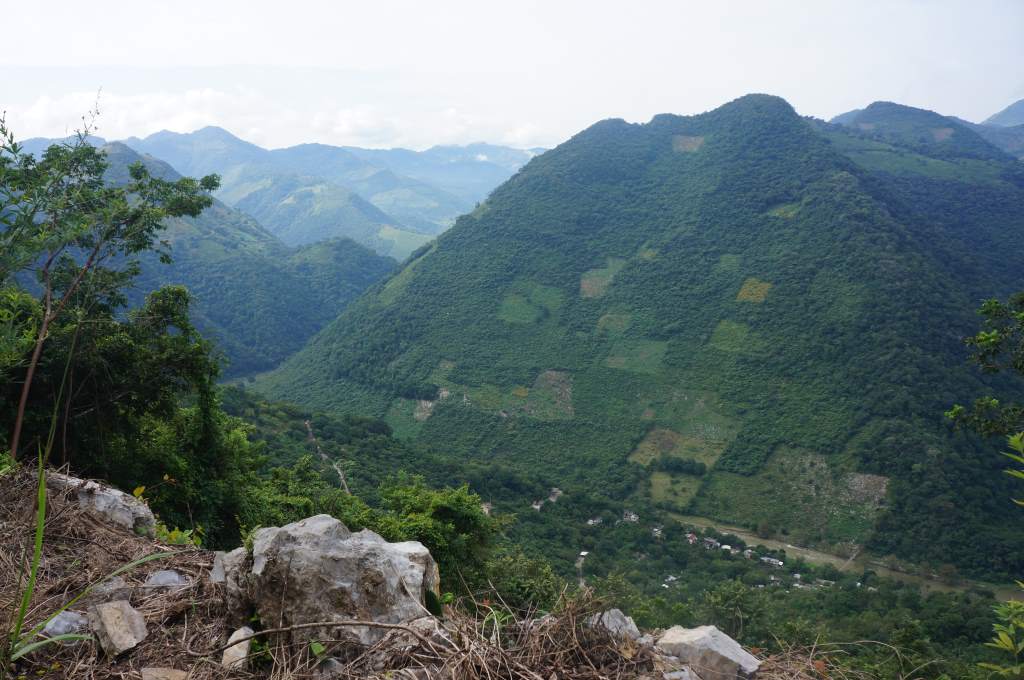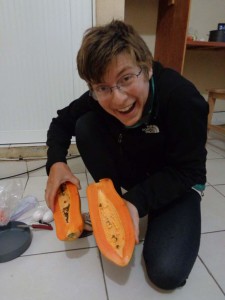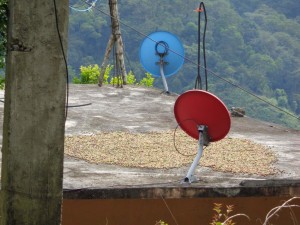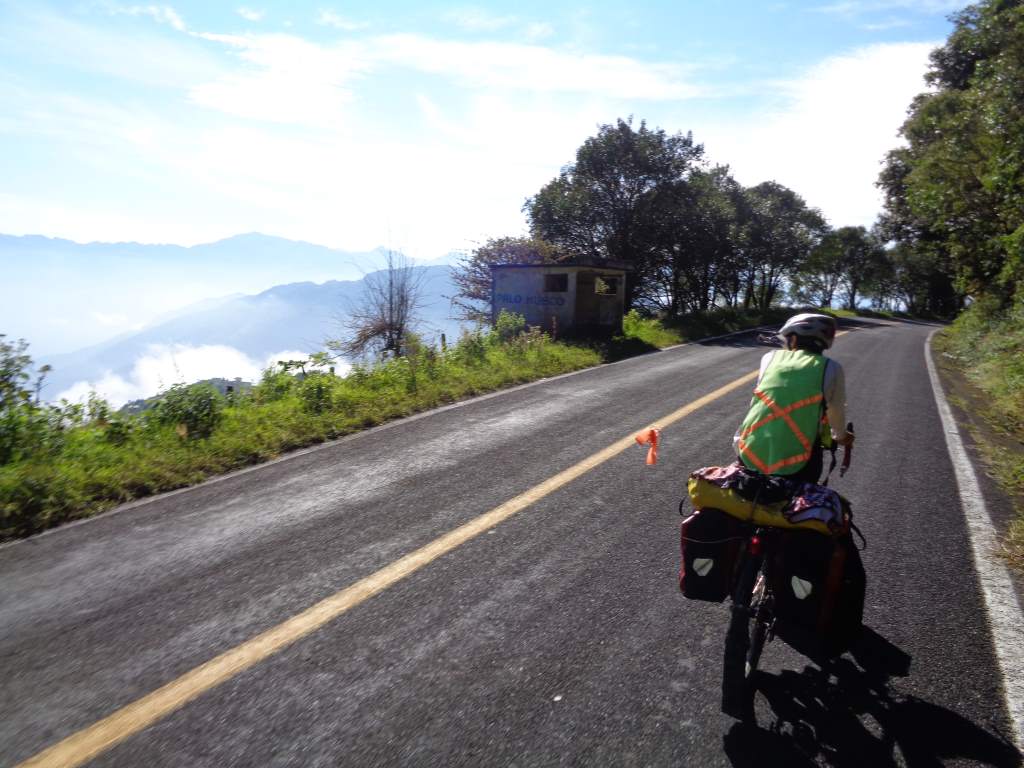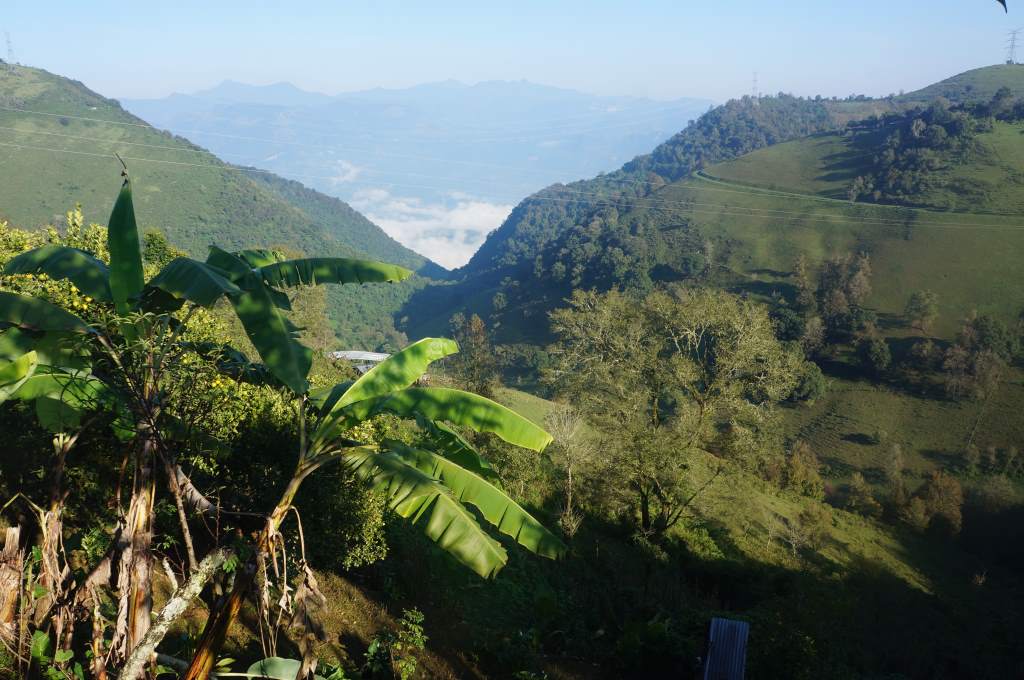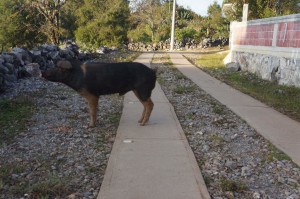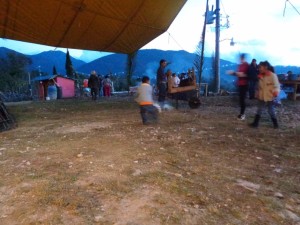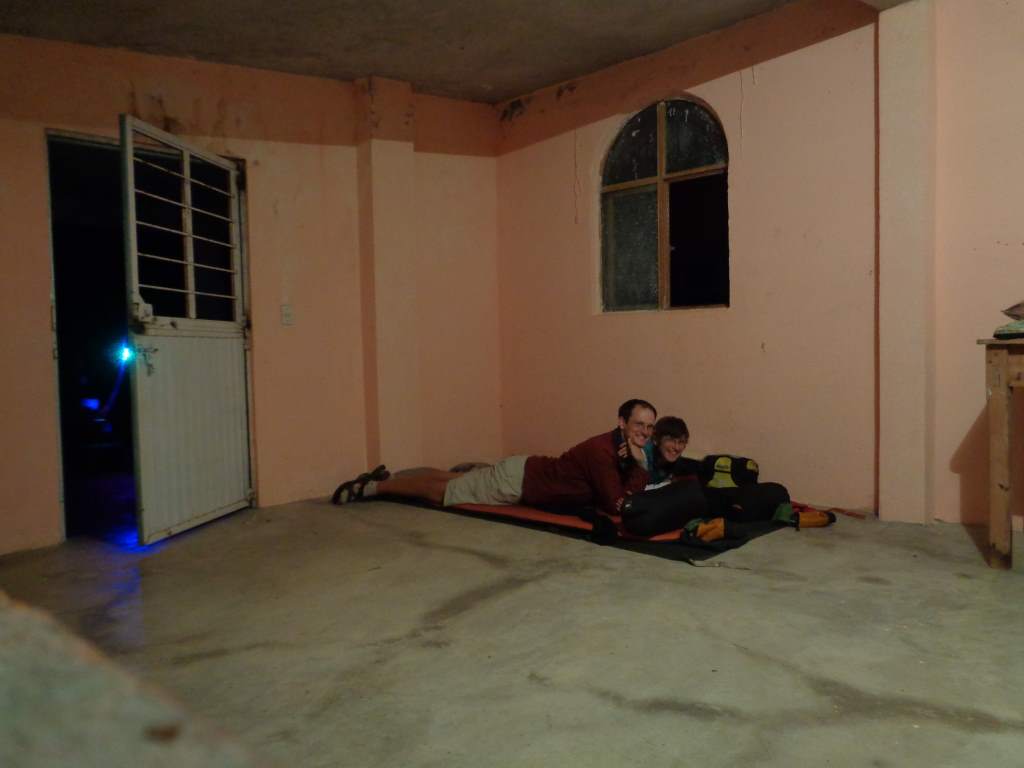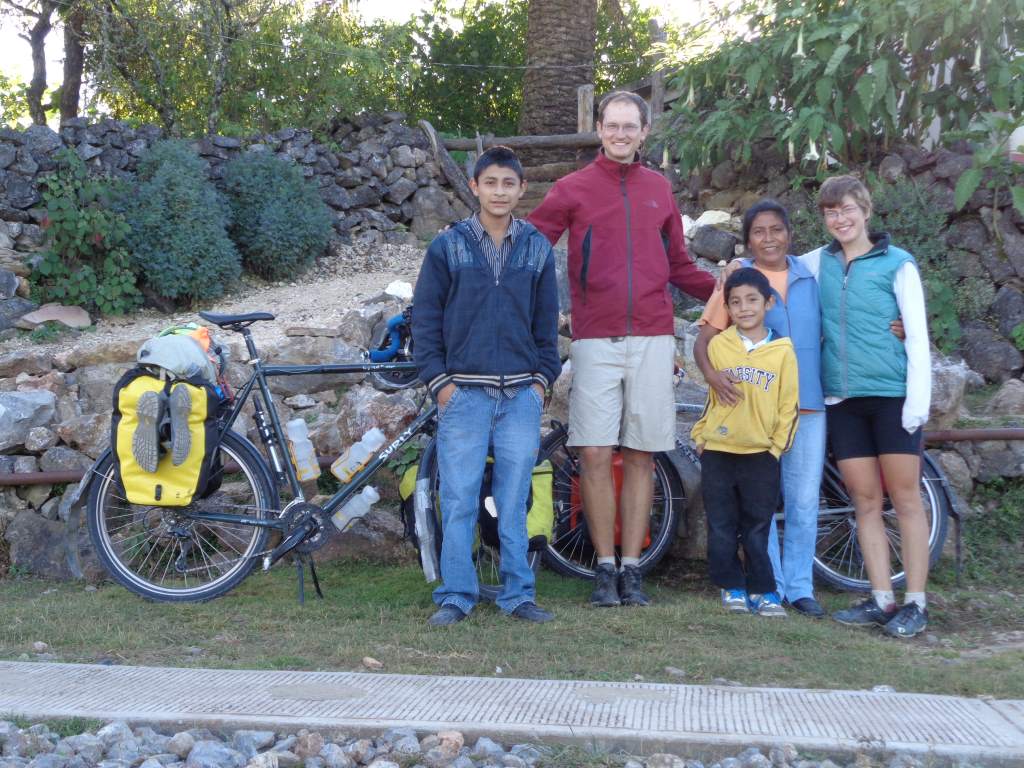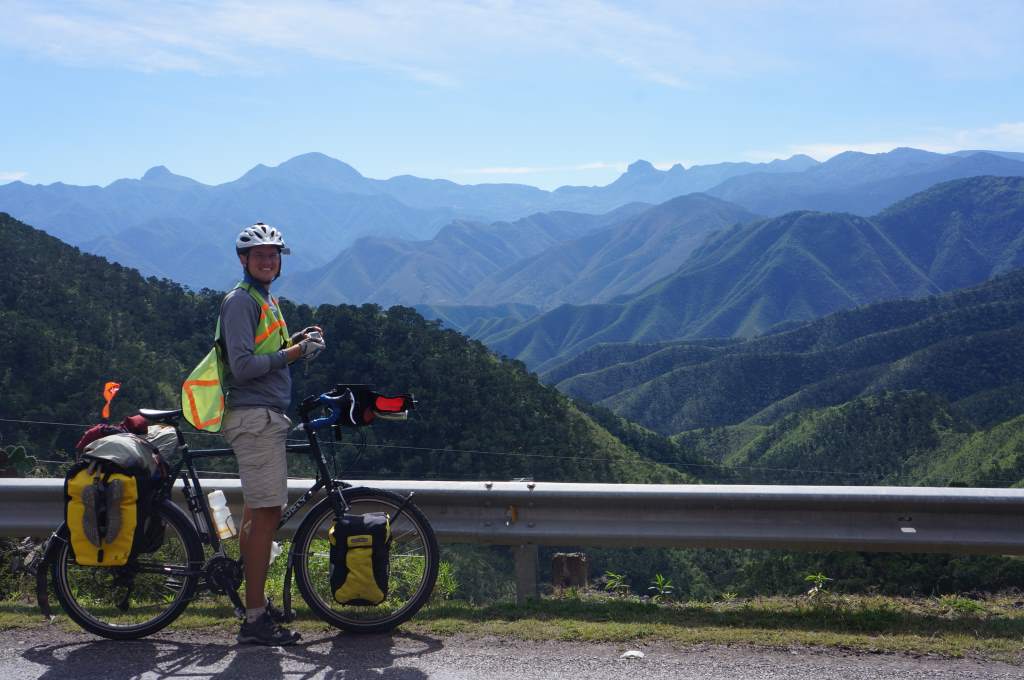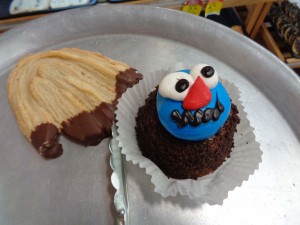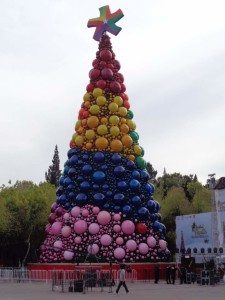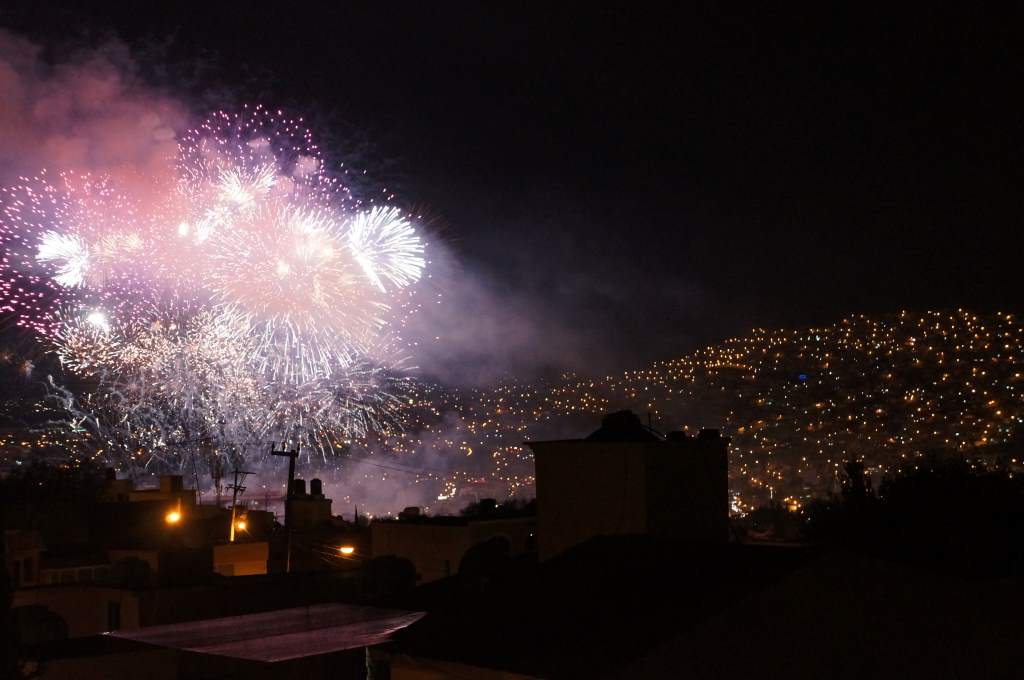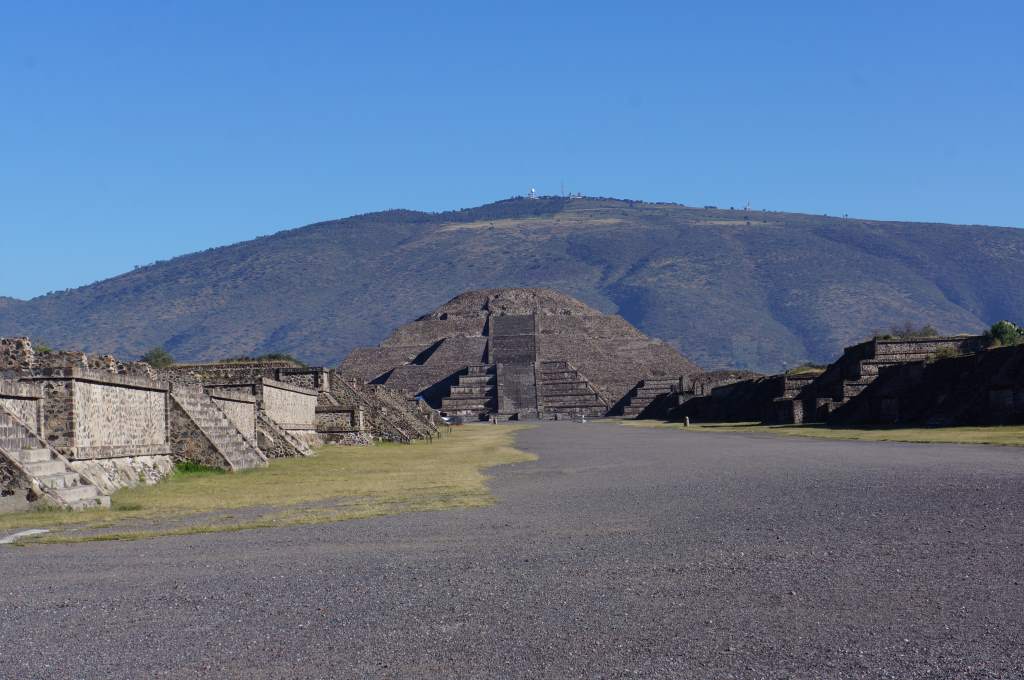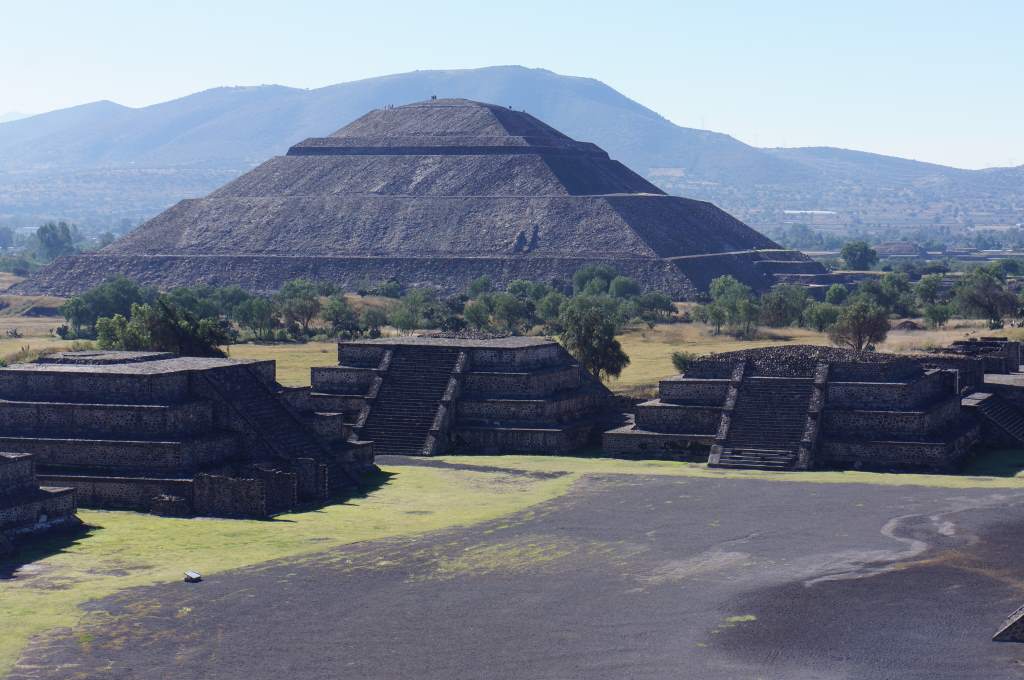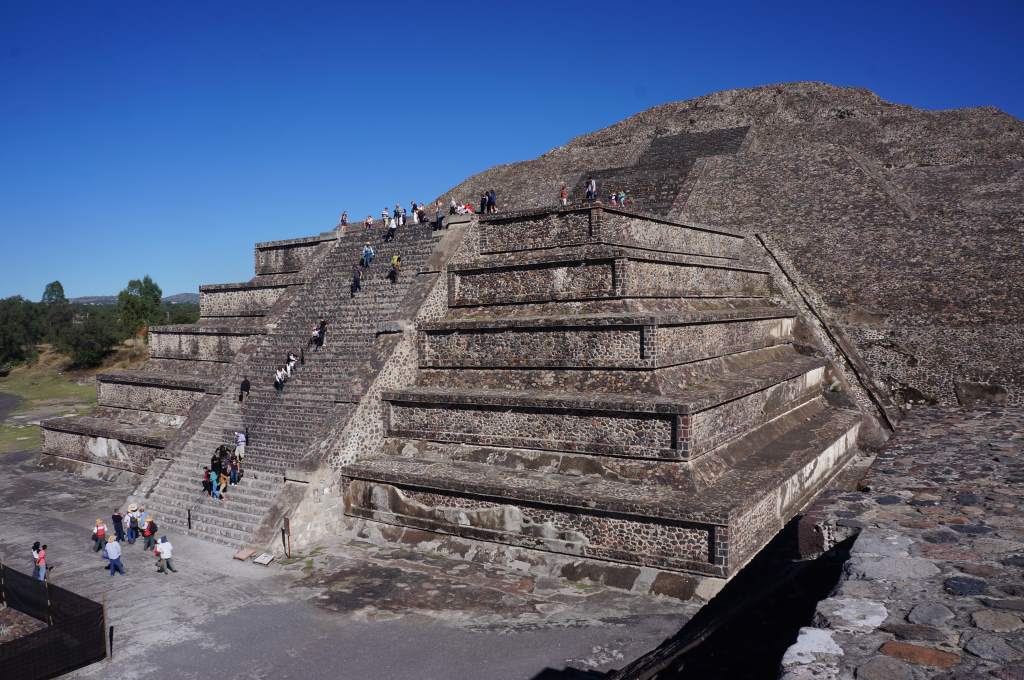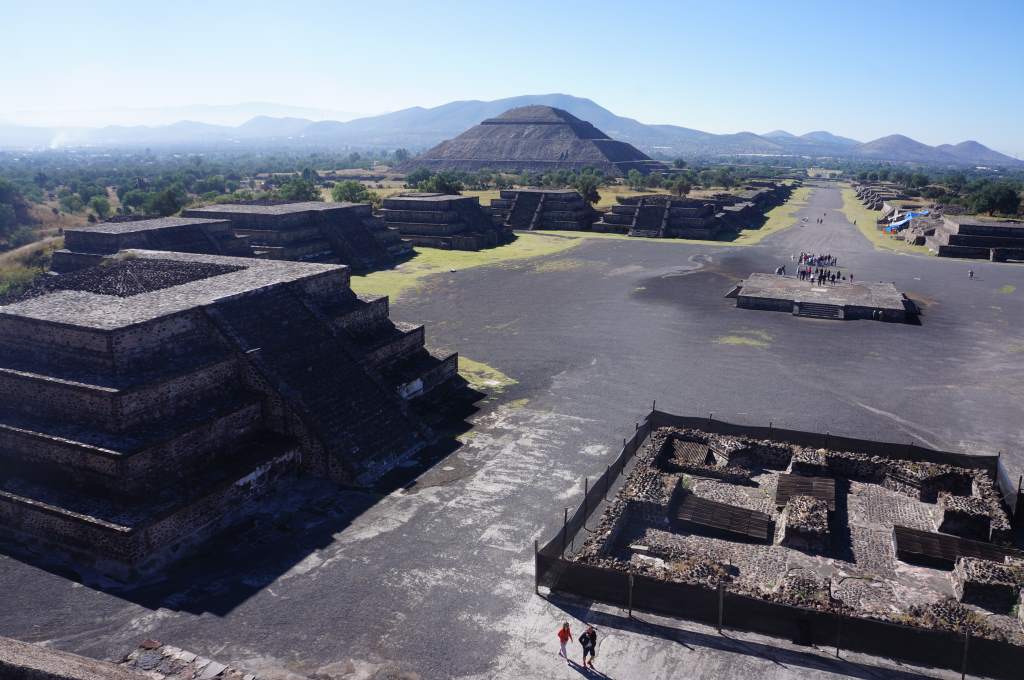Our introduction to Chiapas included another raging headwind combined with an unexpectedly steep 3,000′ climb. At times it was literally impossible to ride and we had to resort to walking up the hill. During the wind gusts it was too difficult to even walk, and we had to use our bicycle’s brakes just to keep from getting blown back down the hill. Yikes!! Needless to say, it was another day where we didn’t make our intended destination.
We turned off the main road an hour before sunset to seek out a small town to pass the night. Yet again, we found a tiny town where perhaps no gringo has ever gone. As we approached the main square we heard fresh bread being announced on the loudspeaker. We followed this sound to its source: the beer dispensary. Apparently, a local family uses it as a base to sell all sorts of homemade foods. The bread was delicious! We asked everyone we met about who to ask to get permission for camping. The town’s main official was out of town for another few hours, so we set up on a basketball court to make dinner. As we did so wave after wave of interested young men (and a lone woman) came by to gawk at us and ask us questions about our trip. Luckily, the official eventually returned and let us camp in his mother’s patio. She was kind to us and showed us her pet squirrel that she had rescued after it was hit by a car. It was a restful night, but we were ready to be back on the road in the morning.
Our next day in Chiapas was supposed to be easy… but of course it wasn’t. We had a nice morning of riding up and down rolling hills, and we planned to stay at an ecotourism center situated next to a giant abyss in the ground over 400′ deep. Unfortunately, we missed the shortcut turnoff and as a result we almost didn’t make it by dark. The last 8 miles of riding were on a narrow dirt road that led us to the middle of nowhere. We saw goats, horses, and cows all relaxing on the road. What we didn’t see were cars or any other tourists, but we bravely rode on. We emerged into a surprisingly well-kept and lovely area on the edge of an impressive abyss.
The hole in the ground was a real thing! It was a circular area about 400′ wide that had simply sunk into the ground. The walls were sheer cliffs 400′ deep. We camped for free that night in a flat area off to the side and comfortingly nearby were fully functioning restrooms. The downside was the crazy British man also camping there who proceeded to have loud arguments with himself in the middle of the night. Luckily, he left us alone and was gone early the next morning.

The Sima de los Cottoras (Sinkhole of the Parrots). Unfortunately for us, the birds migrated north in November so we didn’t get to see their dramatic circular exit at sunrise. (On the other hand, we got to sleep in!)
Our next stop was the capital of Chiapas: Tuxtla Gutierrez. For the last five or so days we had been seeing caravans of folks running along the road carrying torches. We learned that these were pilgrimages for the Virgen of Guadalupe, who is very important for Mexicans. The runners were always accompanied by festively decorated pick-up trucks, mini-vans, or even tractor trailers. We exchanged waves and honks as we passed and got passed by them on the road. Their pilgrimages finally ended on December 12, and we were lucky to be in a very major city for the final celebration. The main street of this hectic town was shut down entirely to make room for pilgrims, street vendors, food, carnival rides, and thousands of pedestrians. We were delighted by the festivities, if a little overwhelmed. Once again, we were reminded that Mexico really knows how to party.
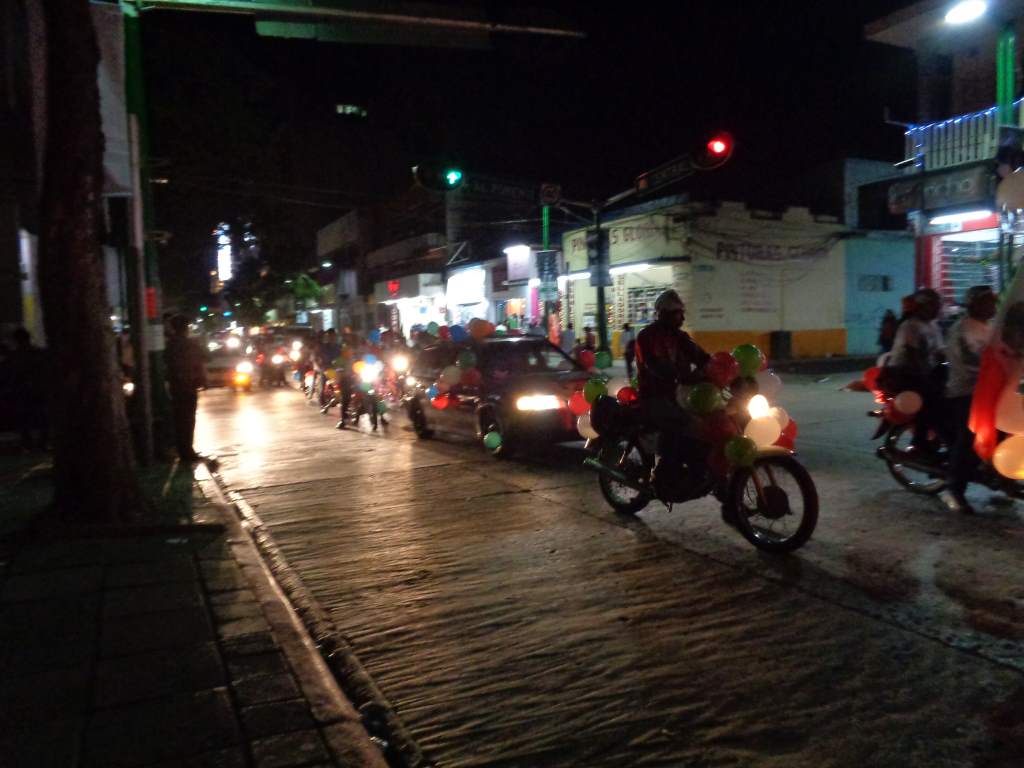
Don’t forget the hundreds of motorcycles that were also part of the parade/pilgrimage – and the noise they made…
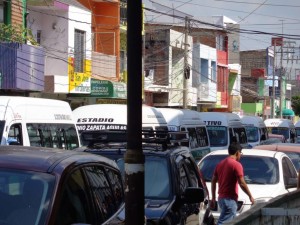
Many “colectivos” lined up to take folks all over the place. For less than $1 US each, we got a 20 minute ride.
Initially we planned to spend a single night in Tuxtla, but Jason began to feel a bit unwell the next day so we decided to take a rest. In the afternoon he felt good enough to venture out of the hostel. We took a collective bus to a nearby town where we boarded a speed boat to take a sightseeing tour of the Sumidero Canyon. This canyon was impressive for many reasons. The sides of the canyon rise up to 3000 sheer feet above the water in towering walls. In the narrow areas that weren’t cliff faces, rain forest abutted the river’s edge. We even saw a crocodile! It was a wonderful trip.

We loved how the hands went up to take photos – and we got to see it all from the back of the boat. The best was the girl with the full-size iPad.
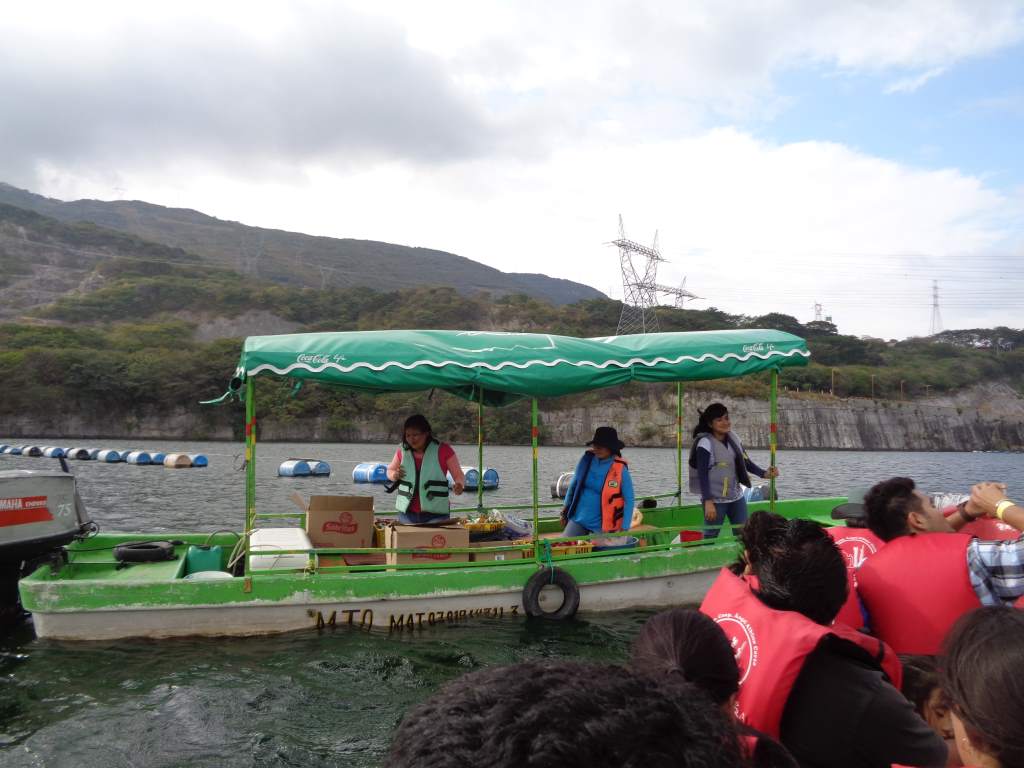
This tourist attraction wouldn’t be complete without a floating snack store! (Surprisingly, there weren’t any dogs at this stop…)
The next day we set out for our biggest day of climbing yet on this trip. It was 6,300′ of elevation gain over 28 miles as we rode to the city of San Cristobal. It was to be our hardest day yet, and not just for the climbing. In the morning Jason decided he felt good enough to make the climb, so we headed out. Technically, he was right, but in retrospect we probably should have stayed put. About 1/3 of the way into the climb Jason was feeling poorly with an upset stomach and a headache. It was a surprise to both of us when he suddenly vomited in the road during a rest stop. It sounds horrible, and I guess it was, but after it was over Jason felt much better and remarked that it tasted like a strawberry-banana smoothie. Bizarre, but oh well.
I took as much of the weight as I could off of Jason’s bike and we slowly continued climbing. He didn’t feel like eating but I tricked him into eating a lunch of fruits and veggies with peanut butter. Slowly, slowly, slowly we made it up the mountain. It was quite a moment of relief when we finally crested the last part of the hill and saw the shining city of San Cristobal in the valley below.
For now, we are staying put in the city while Jason recovers for a bit. We hypothesize that he ate something that really really didn’t agree with him, and it is just going to take a bit to work its way out of his system. We plan to stay here for around 5 days to also allow Jason to take some language classes, as long as he feels up to it. We’ll let you know how it goes!
